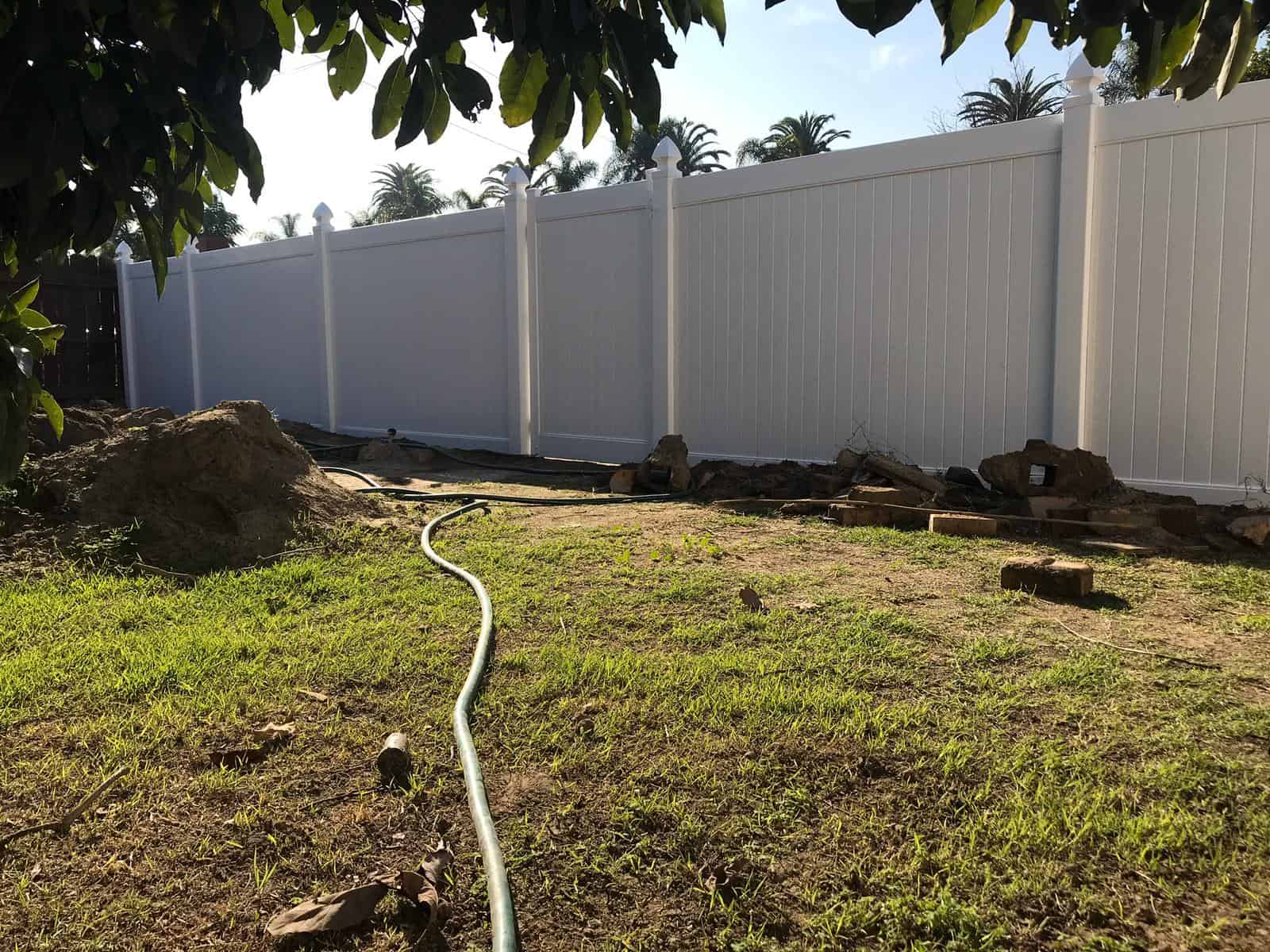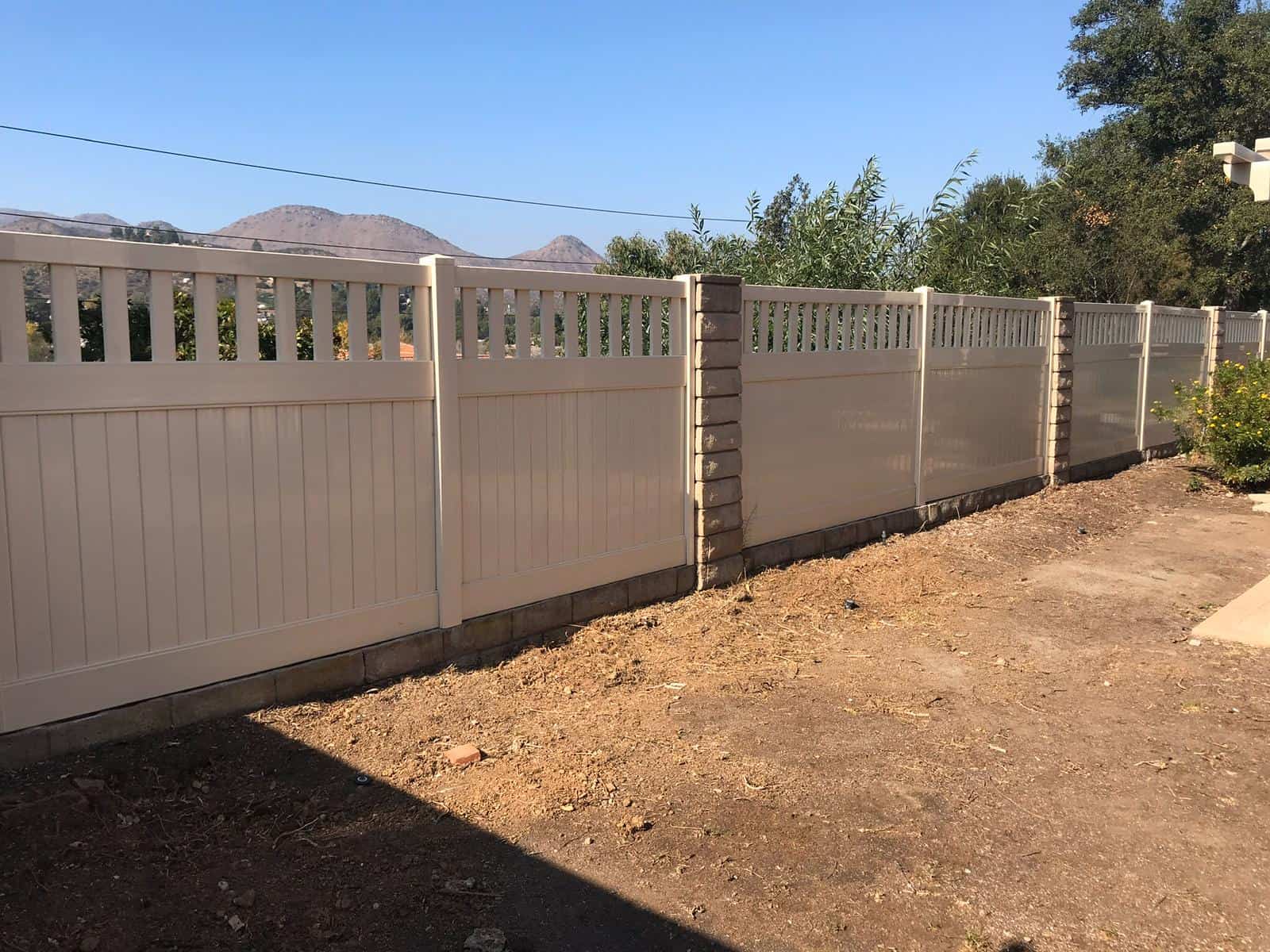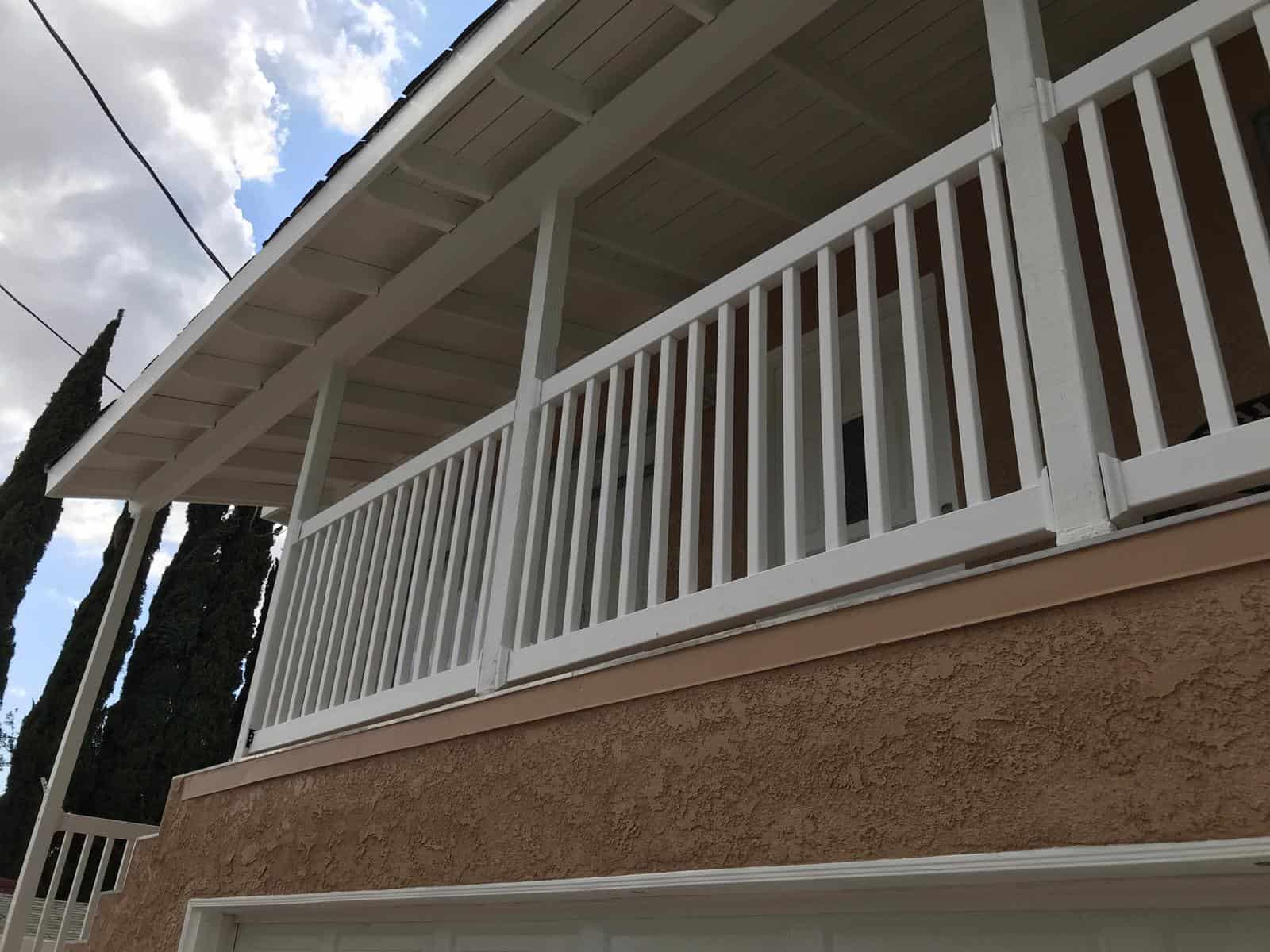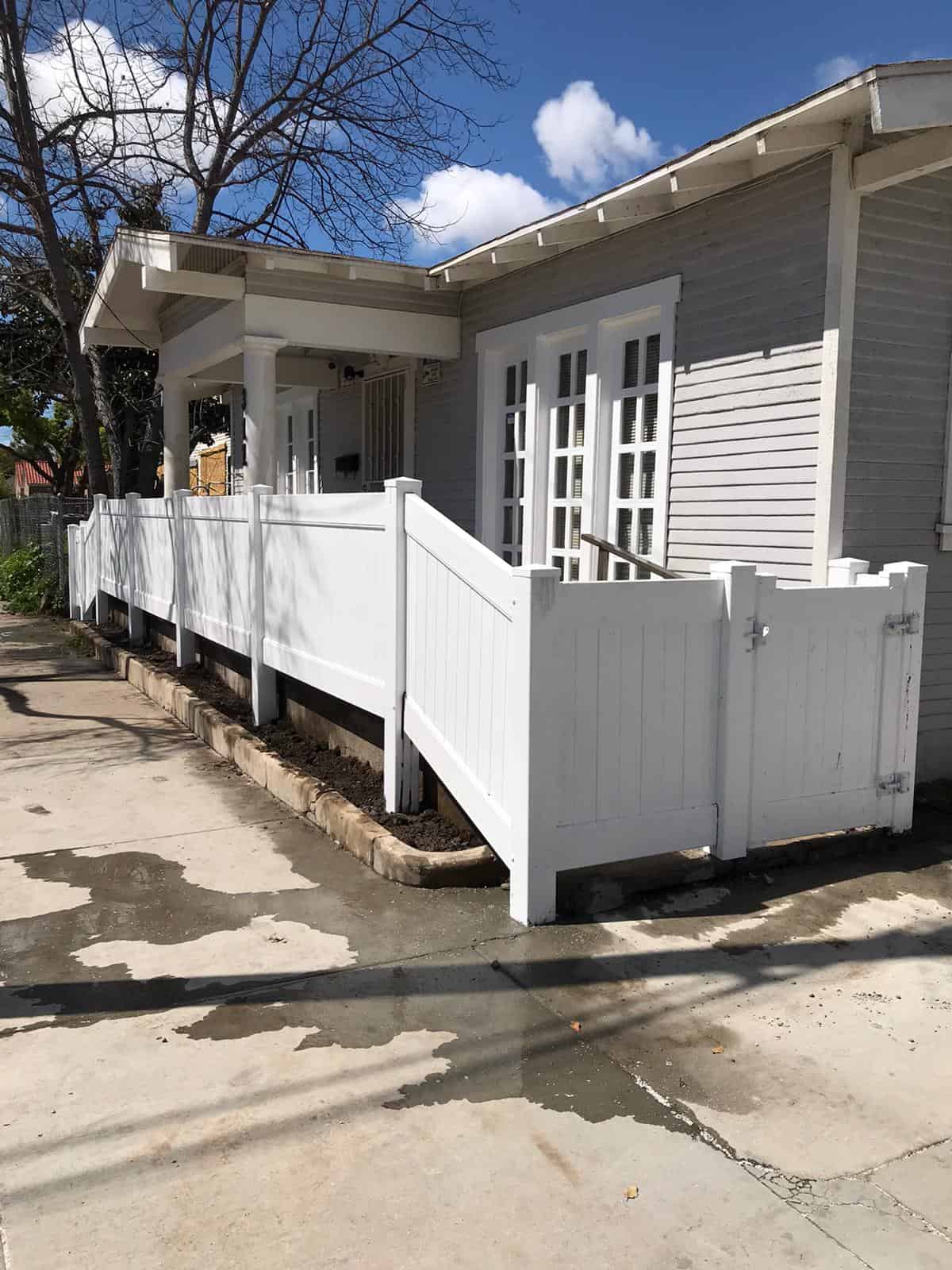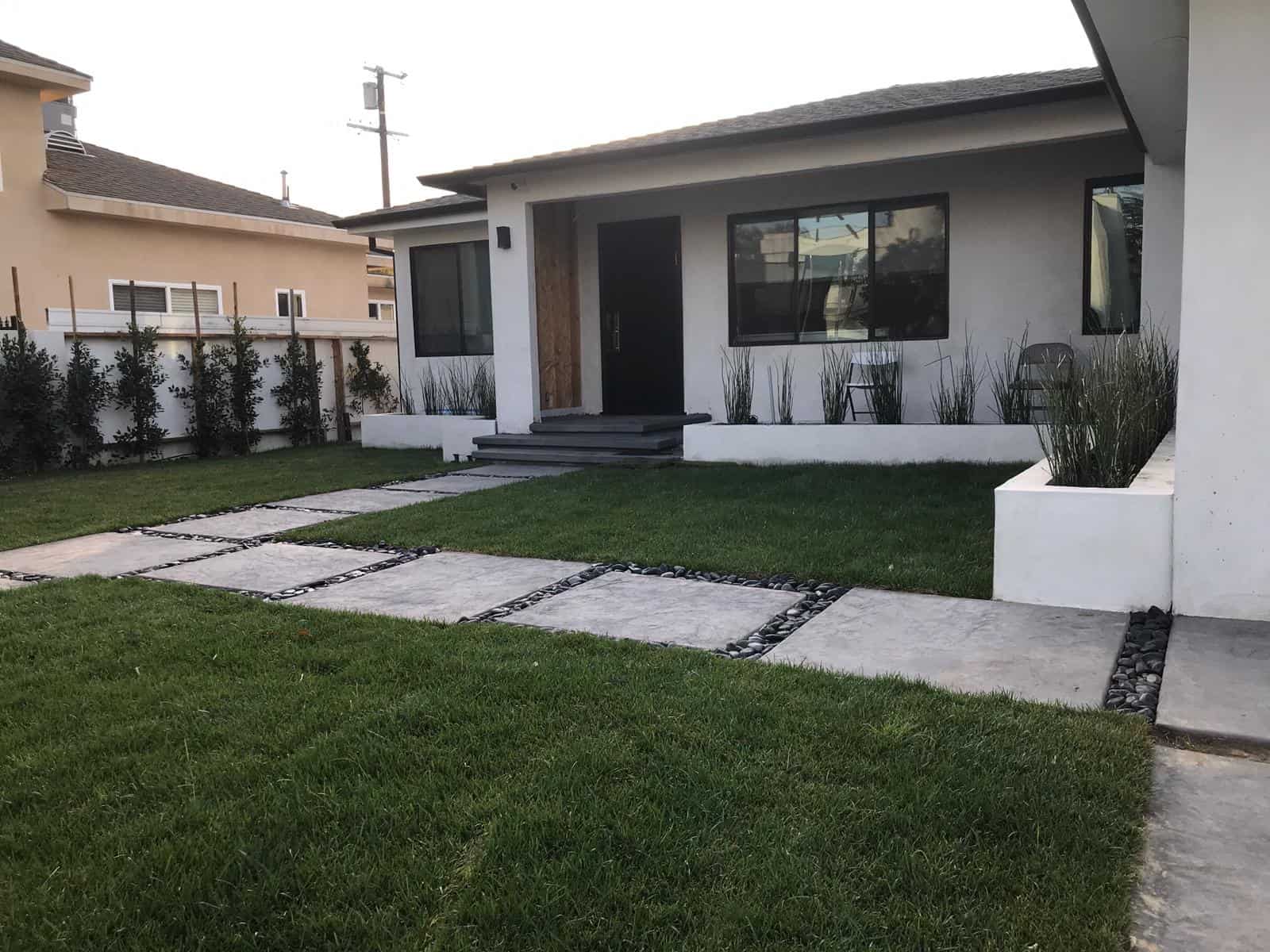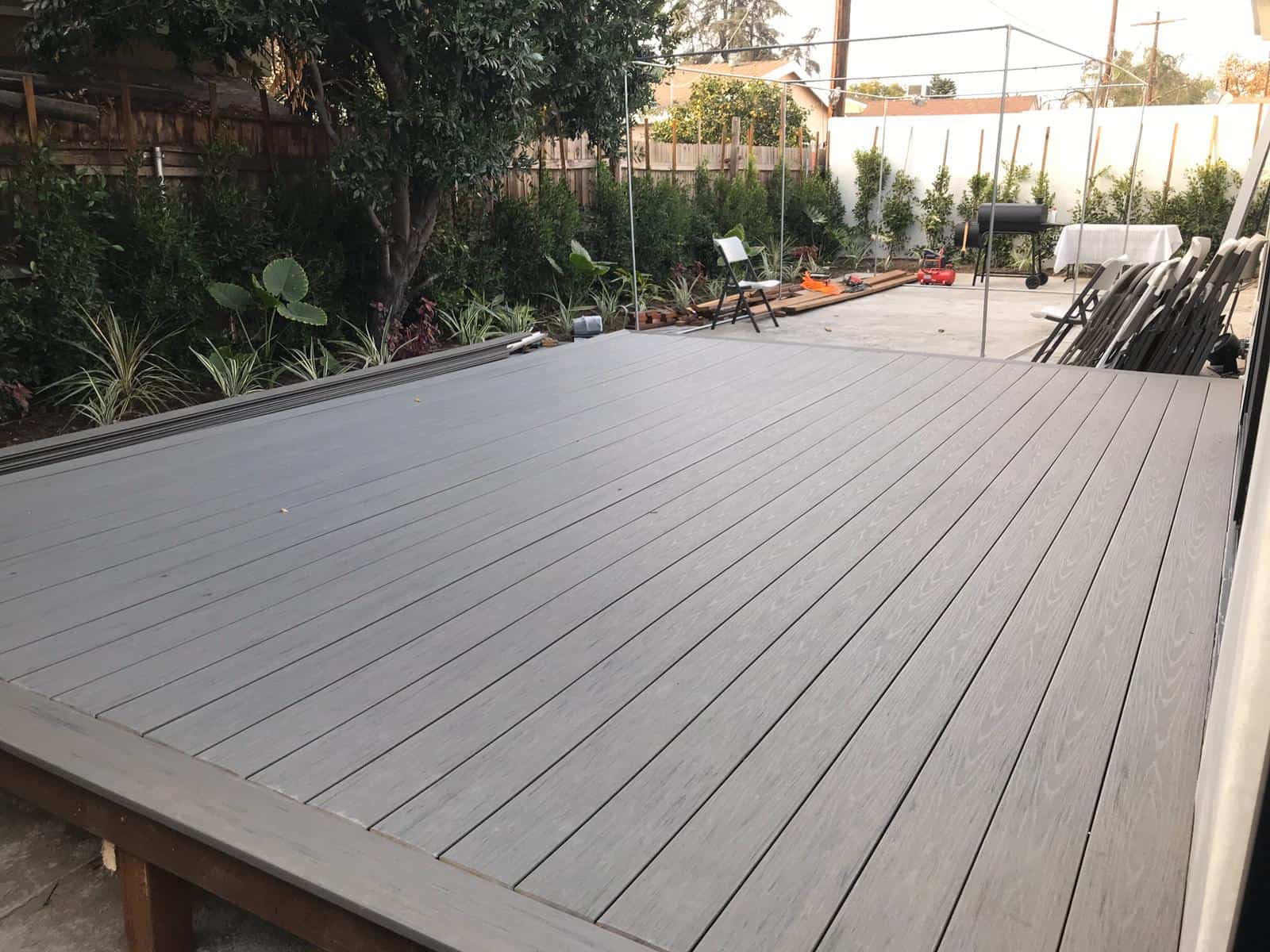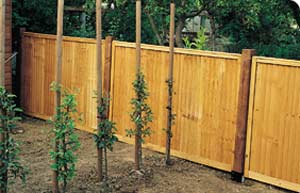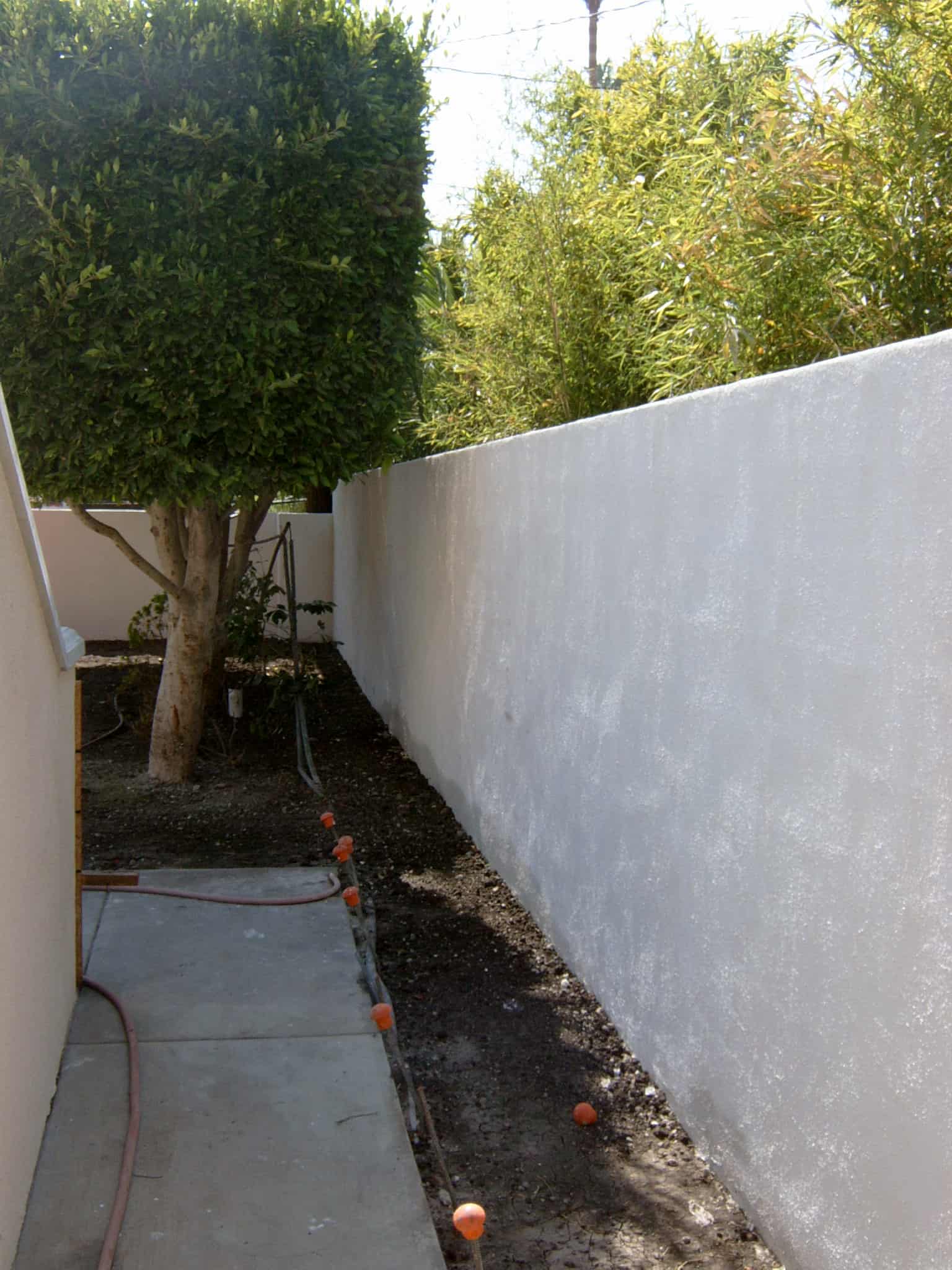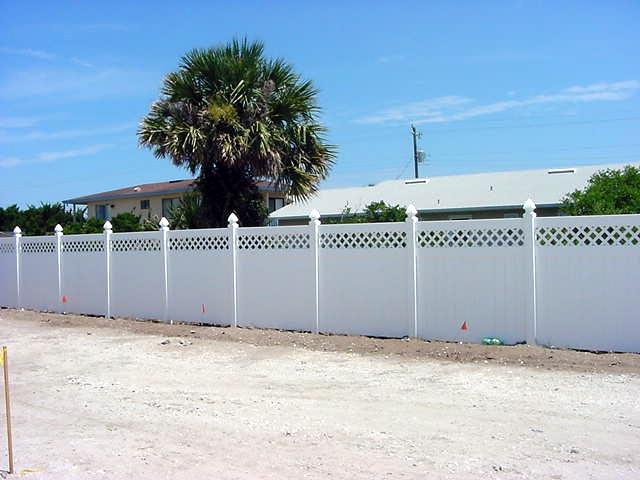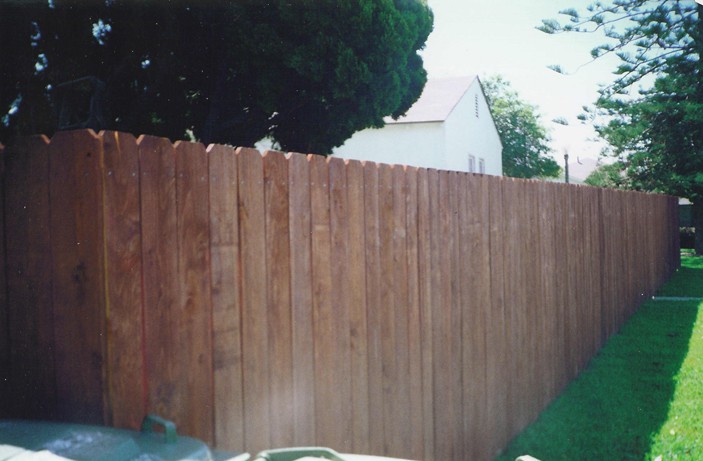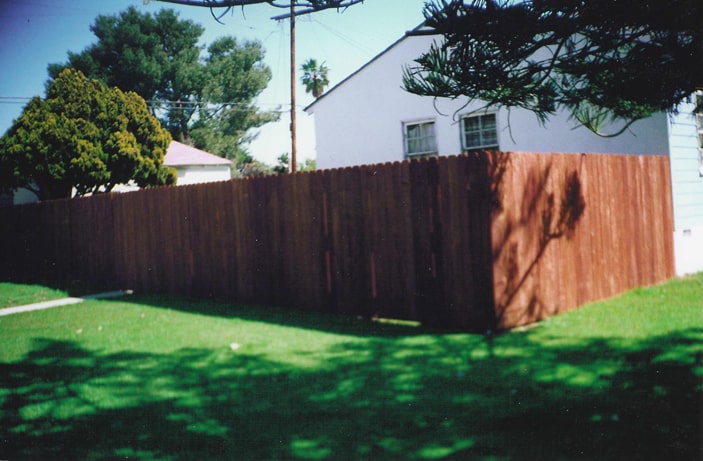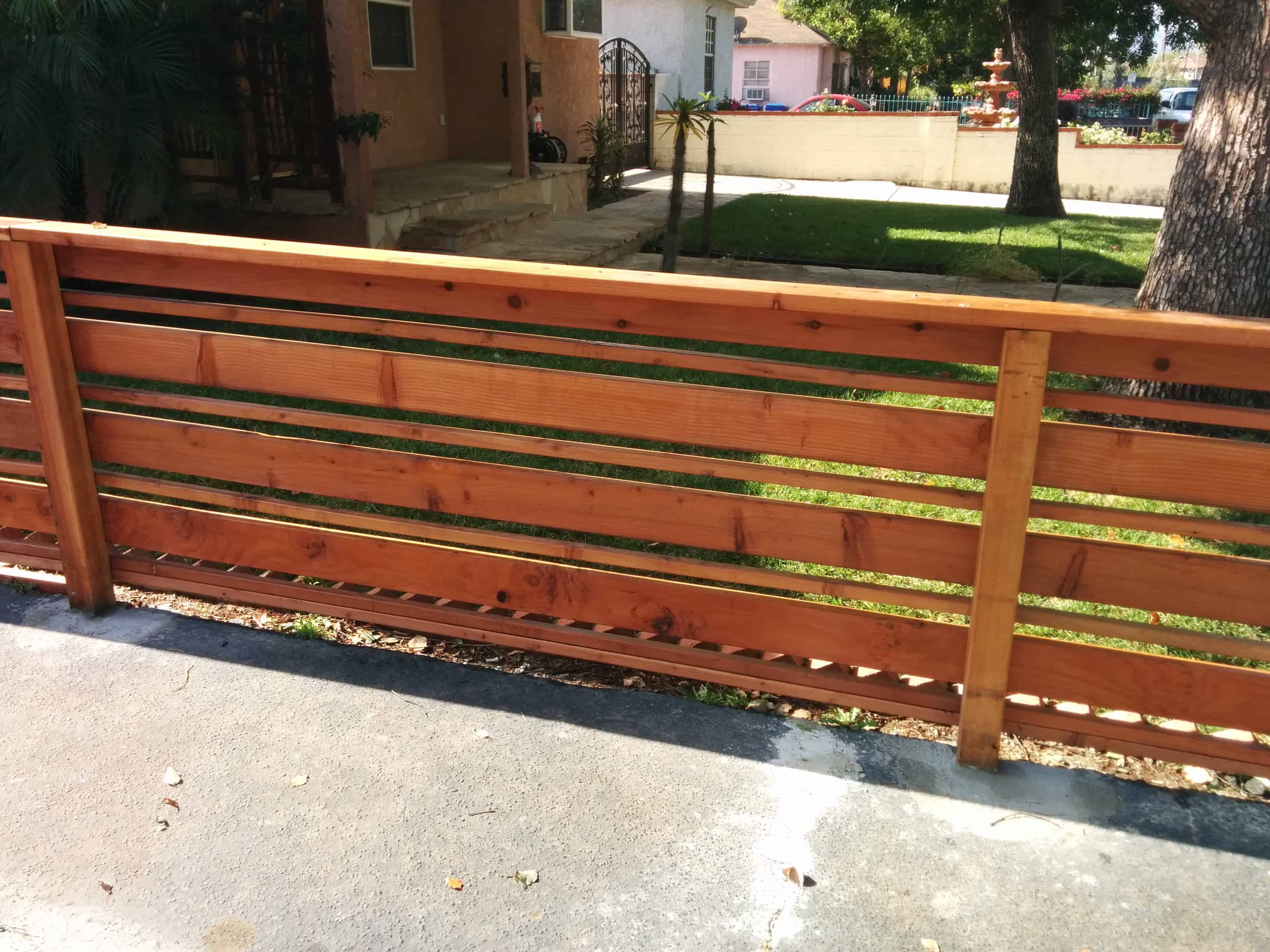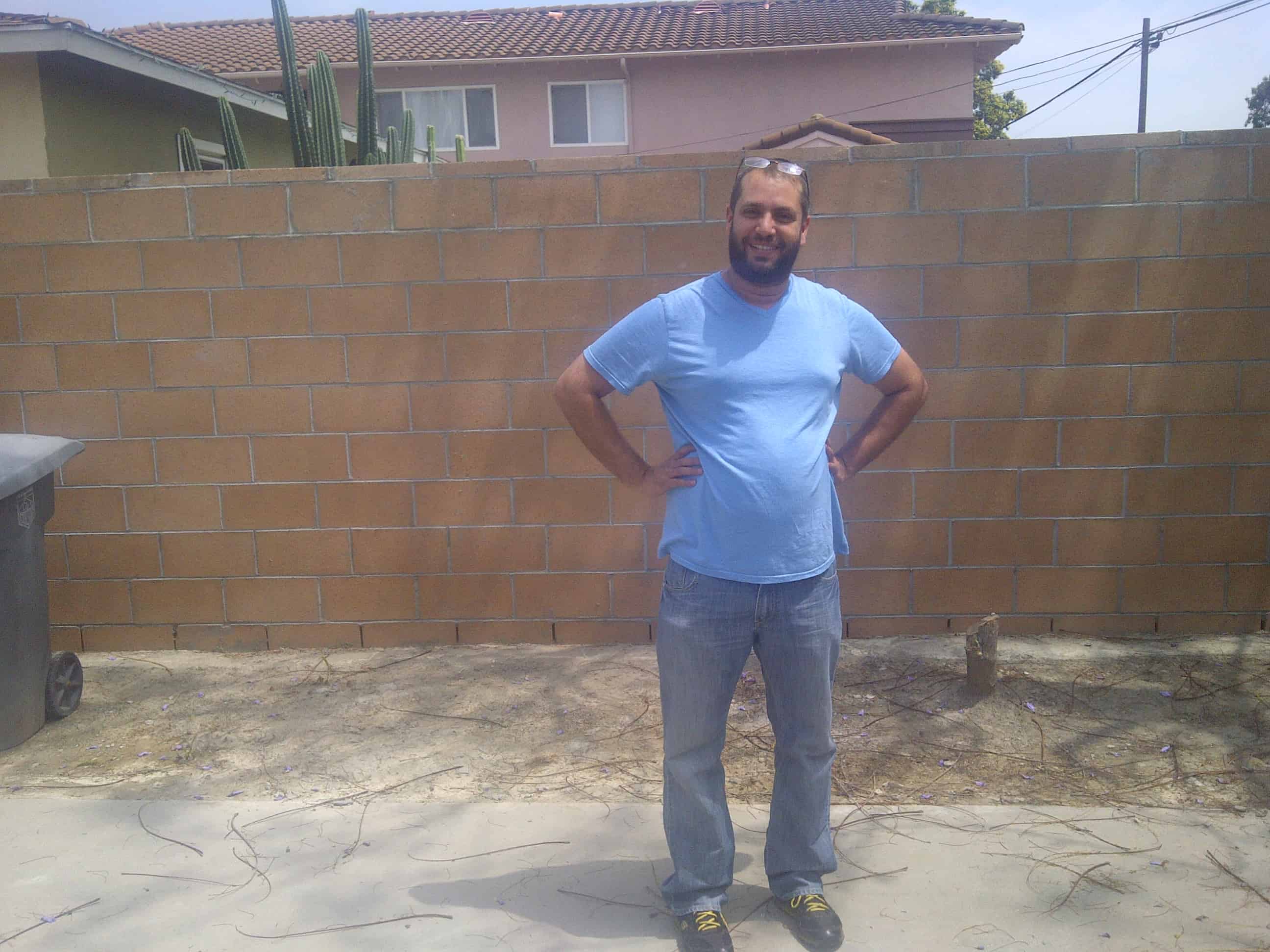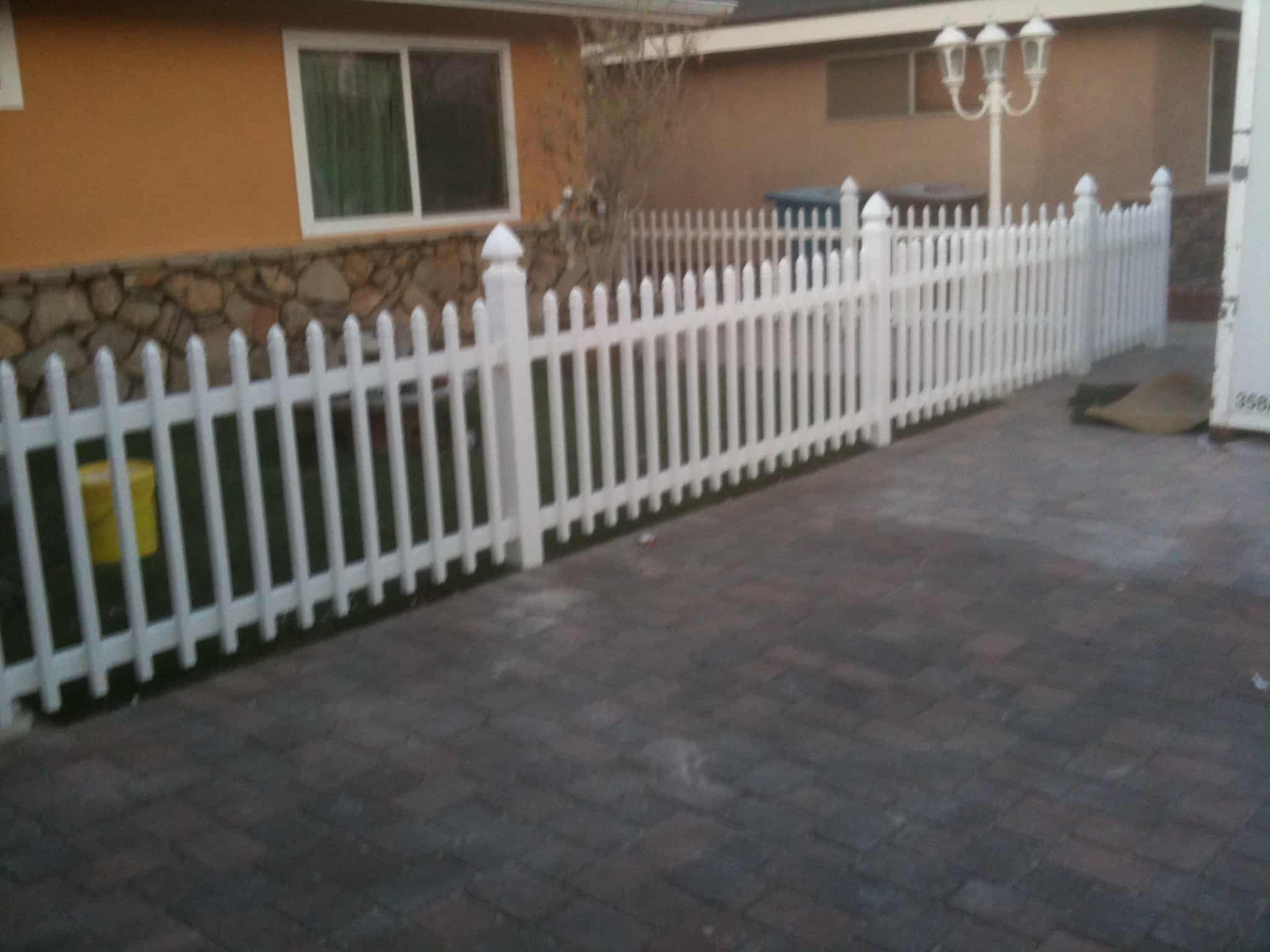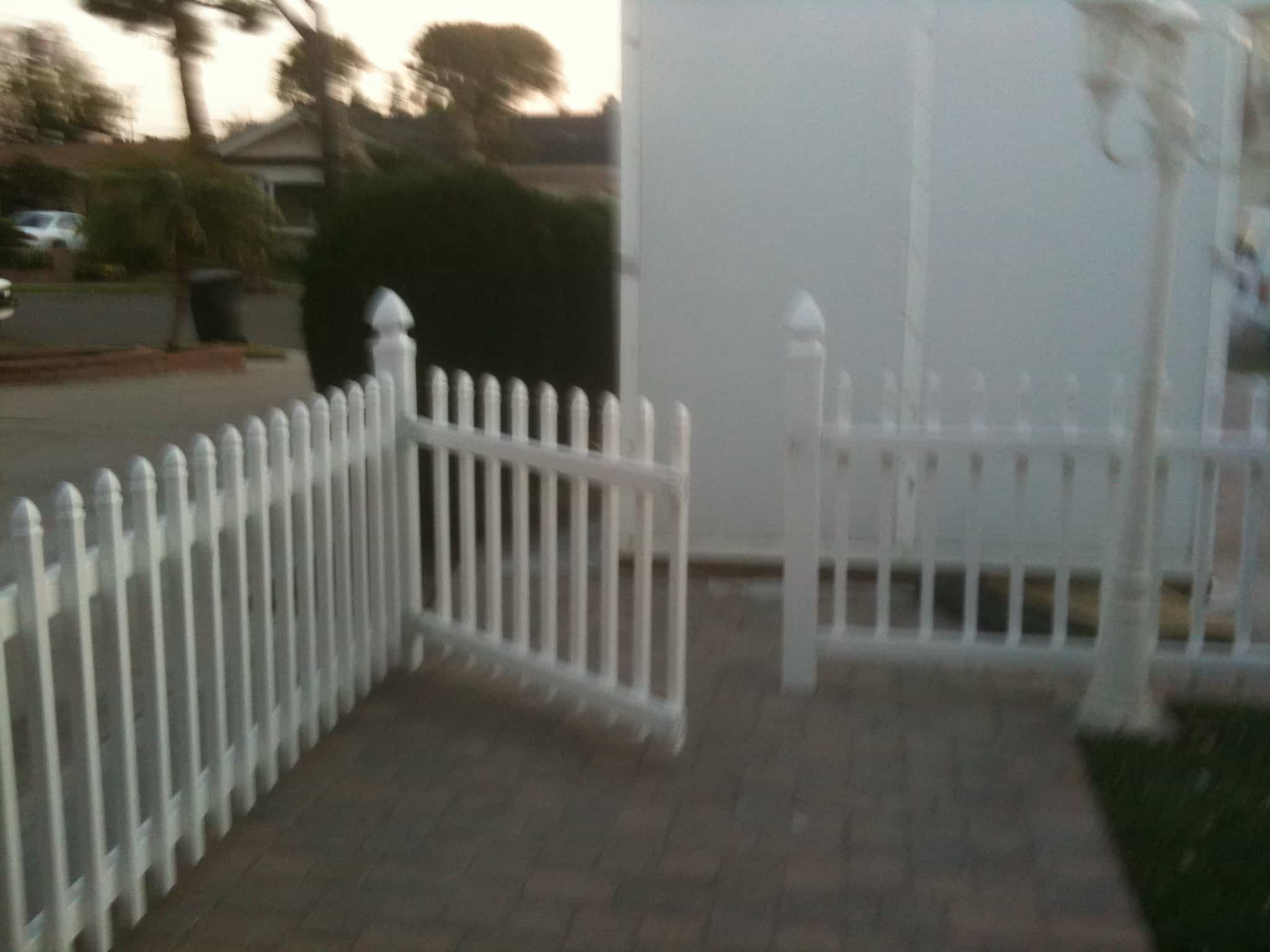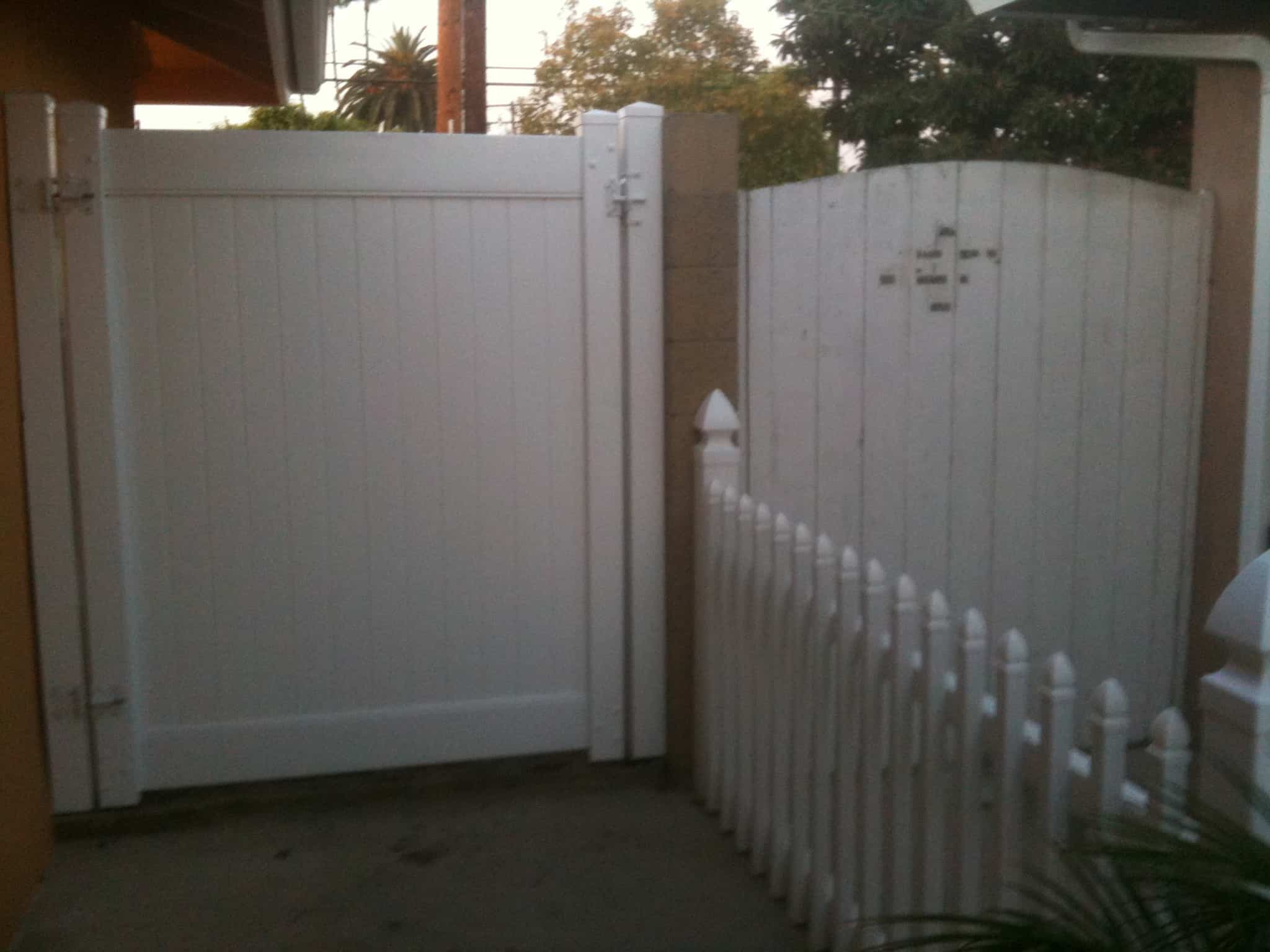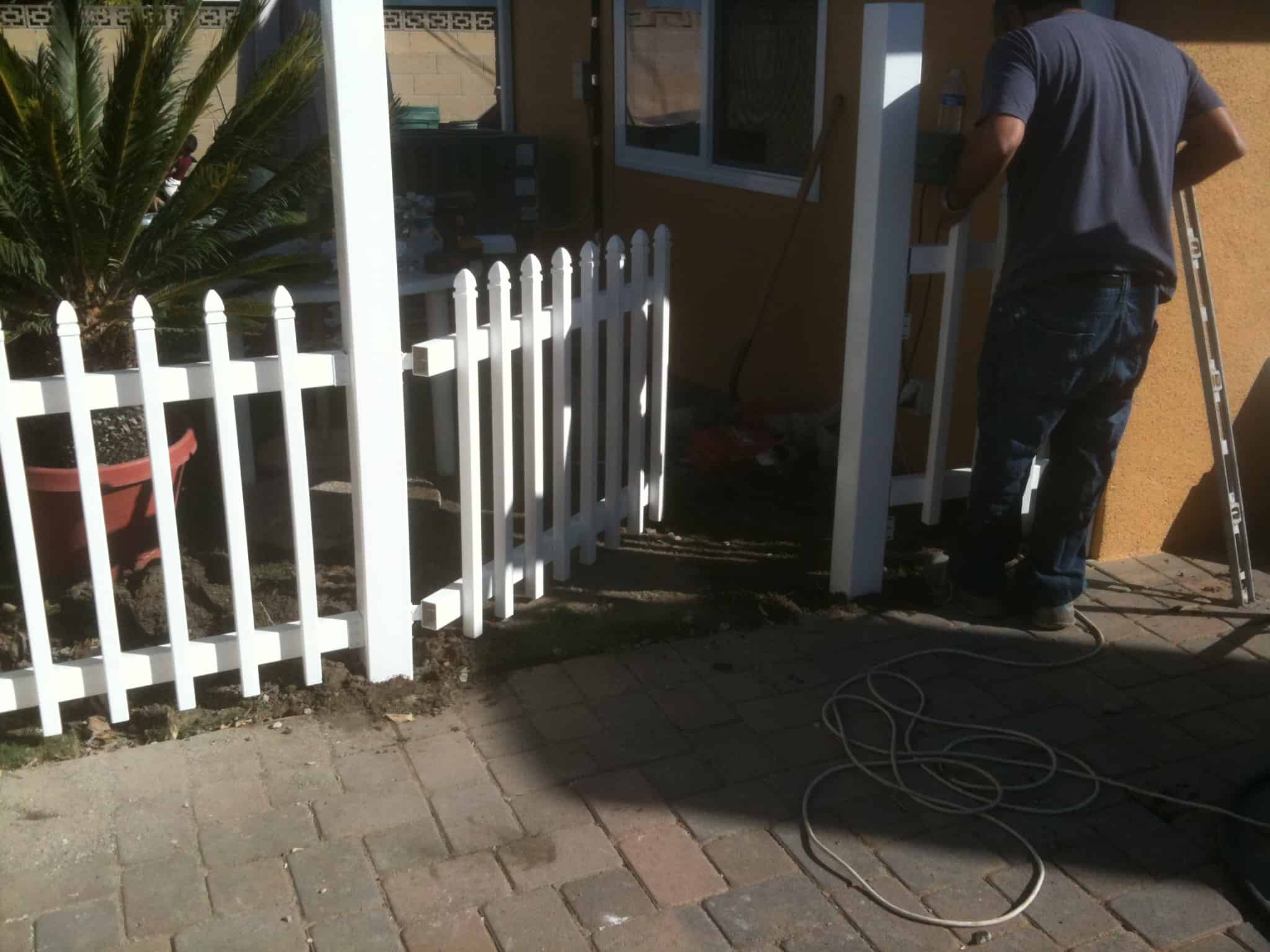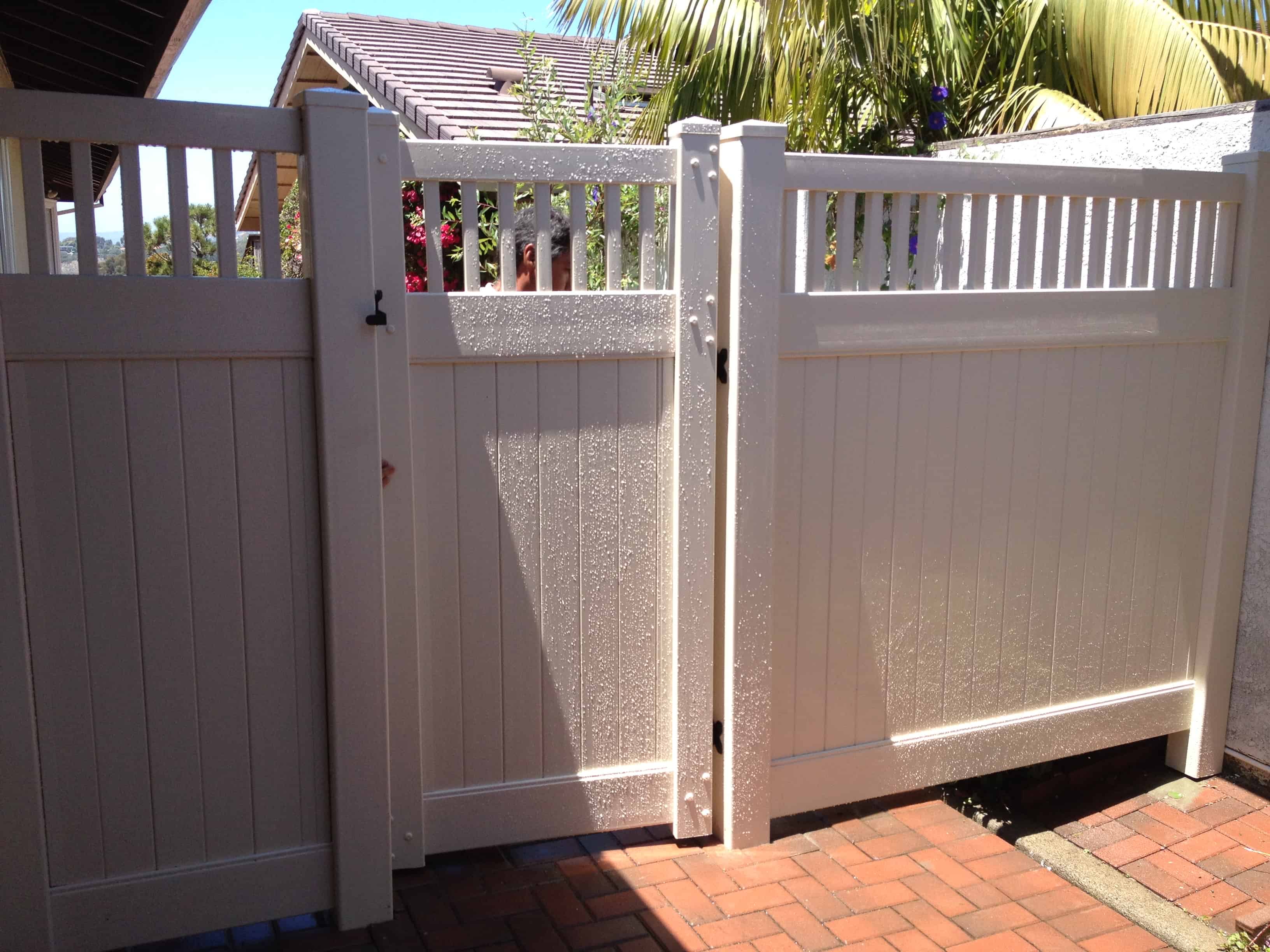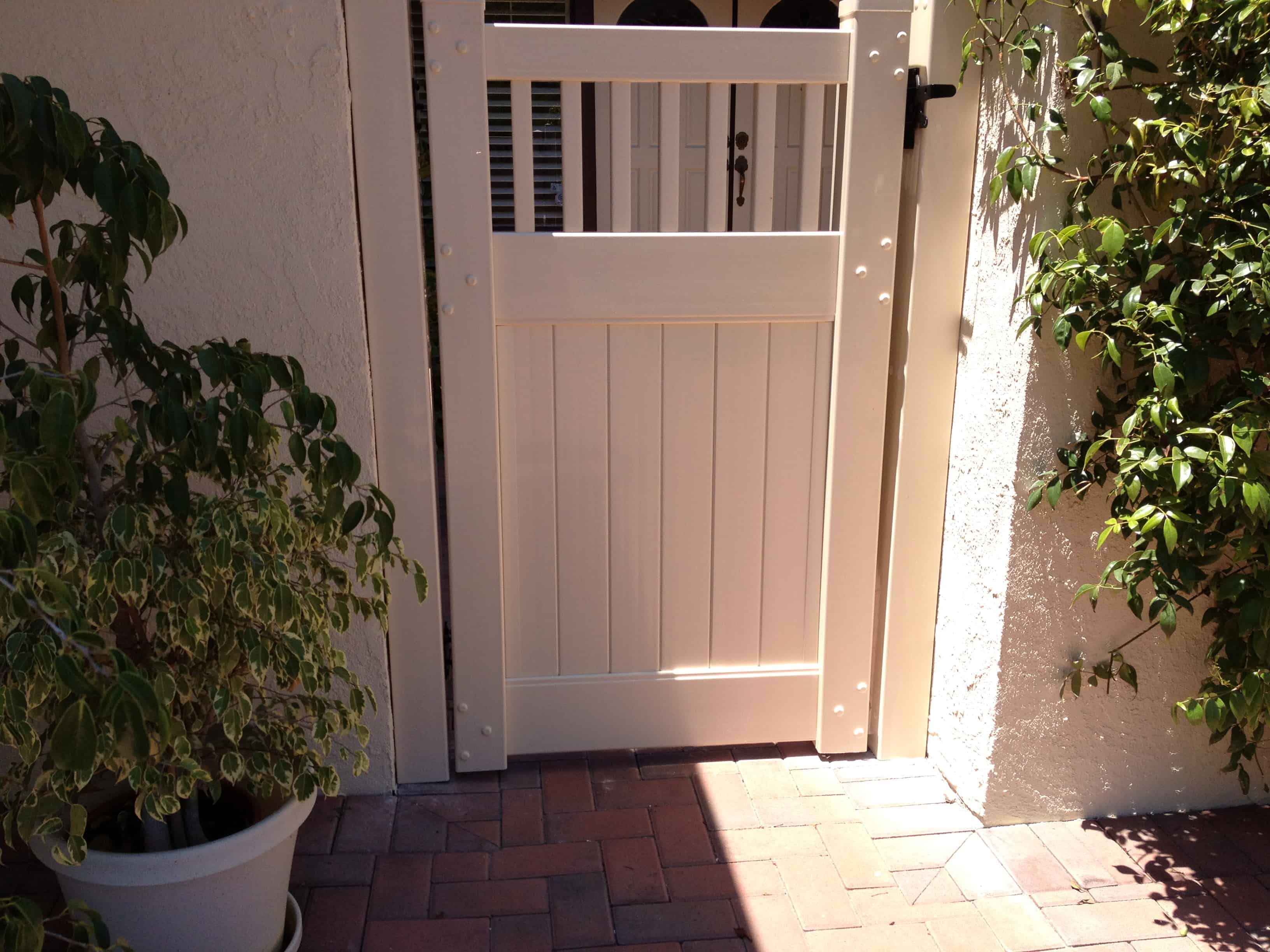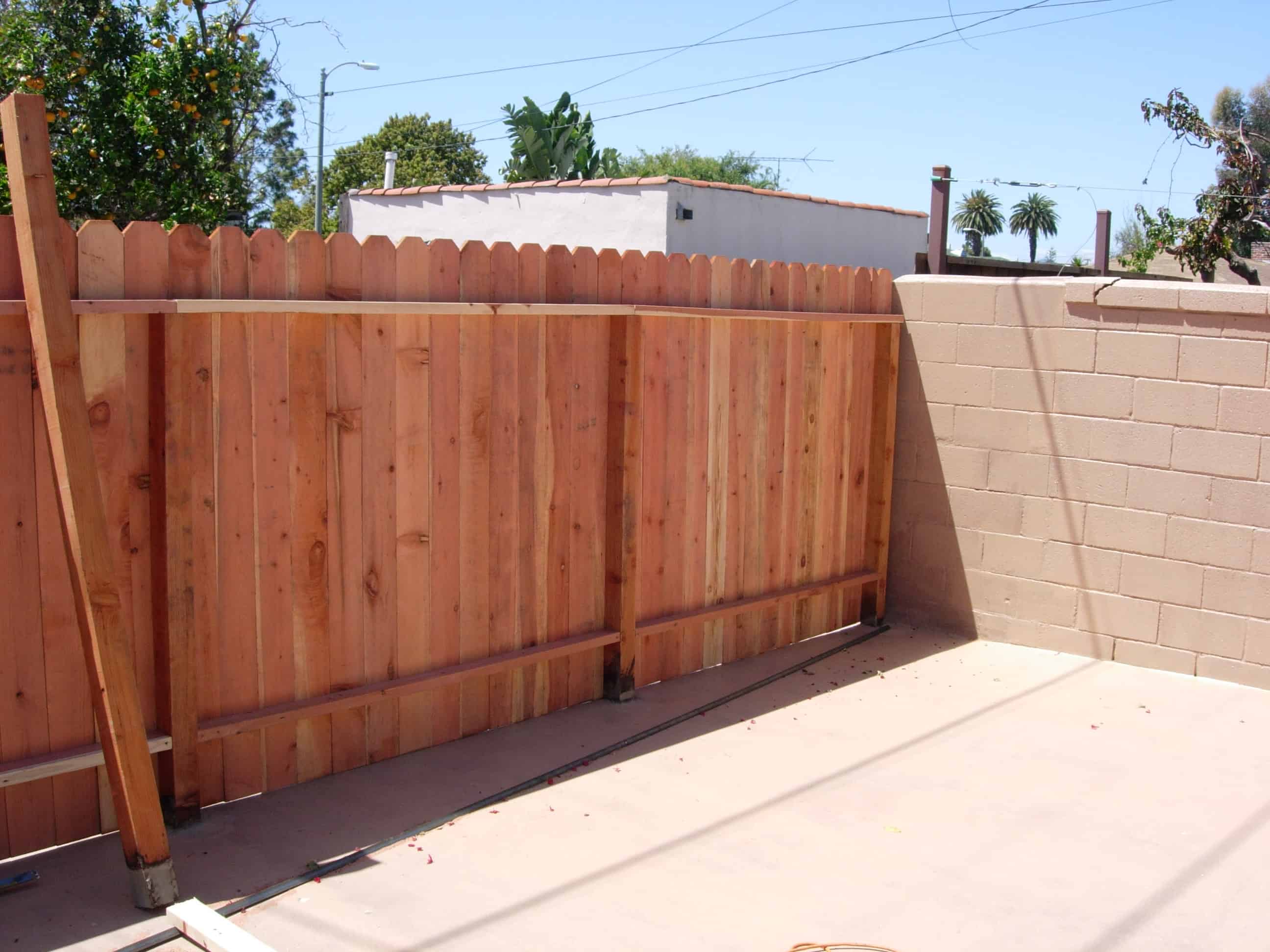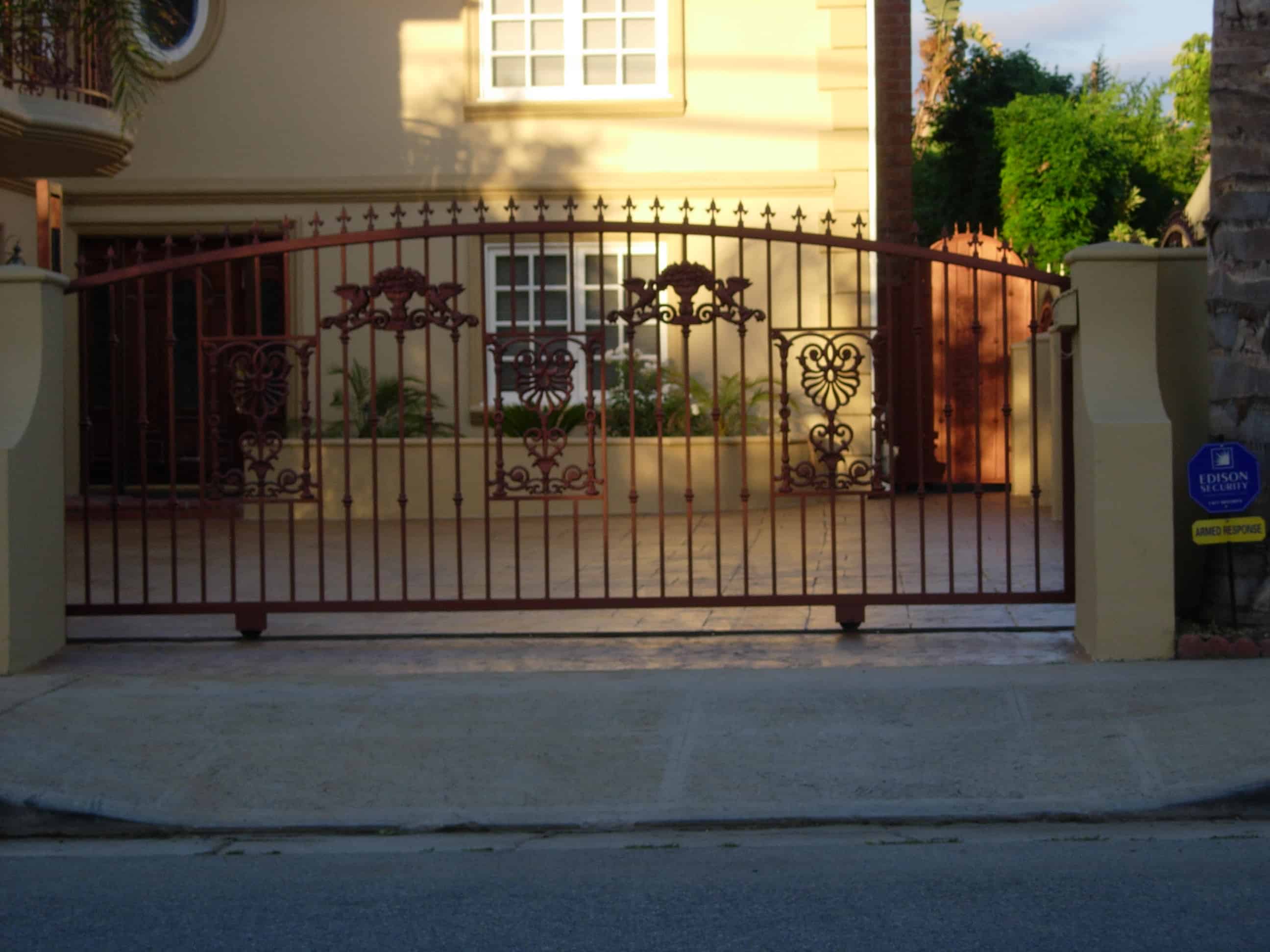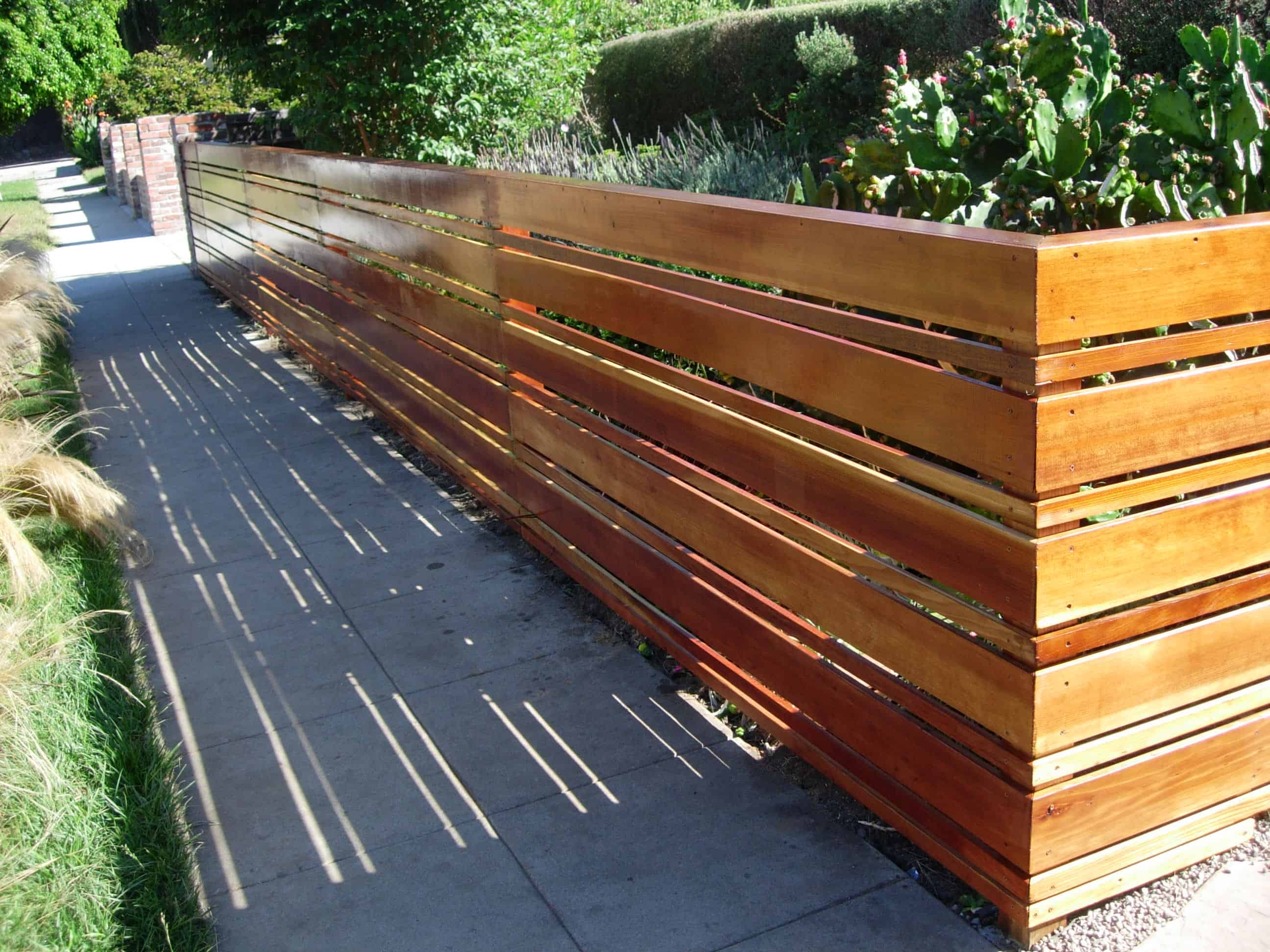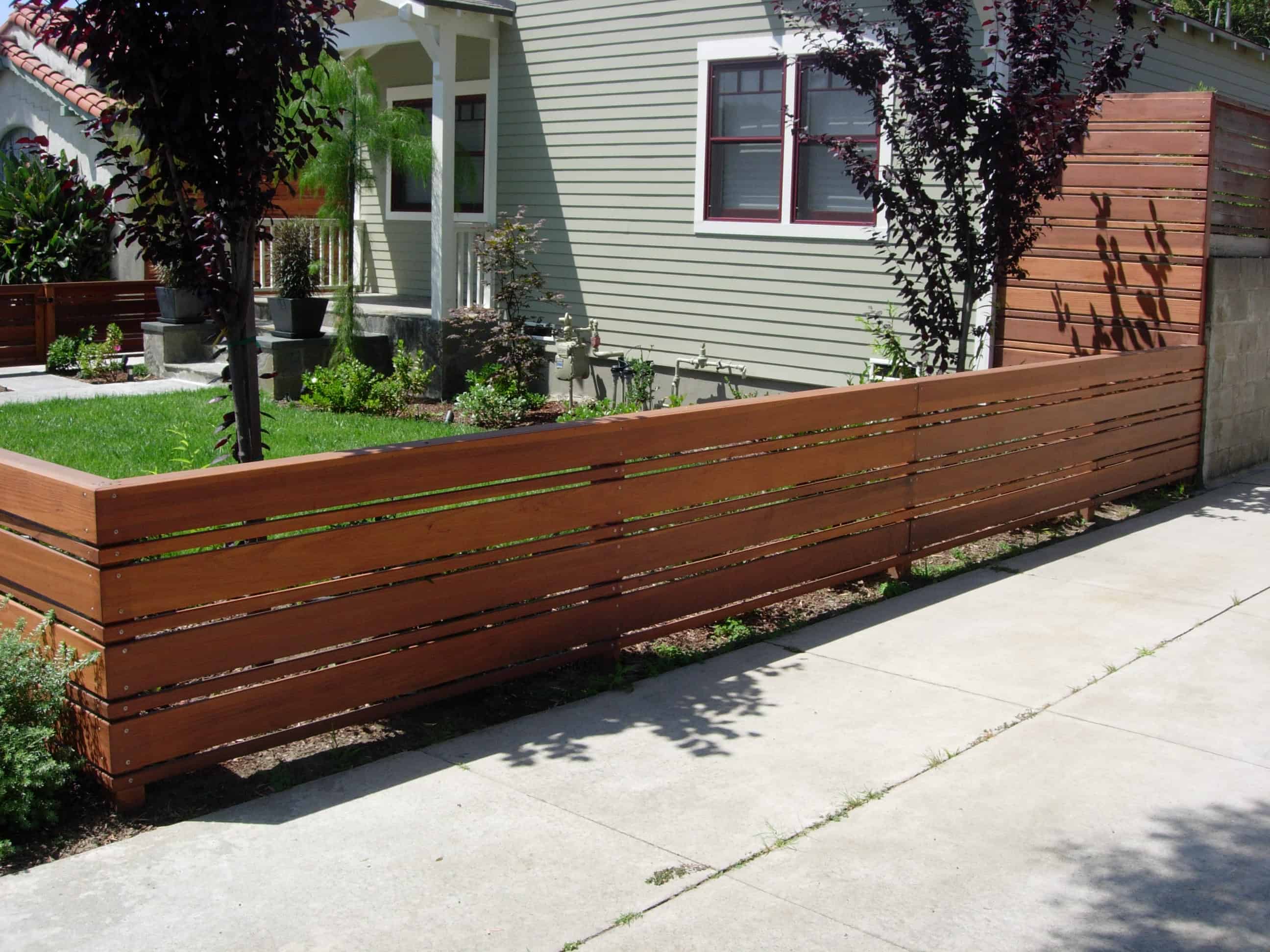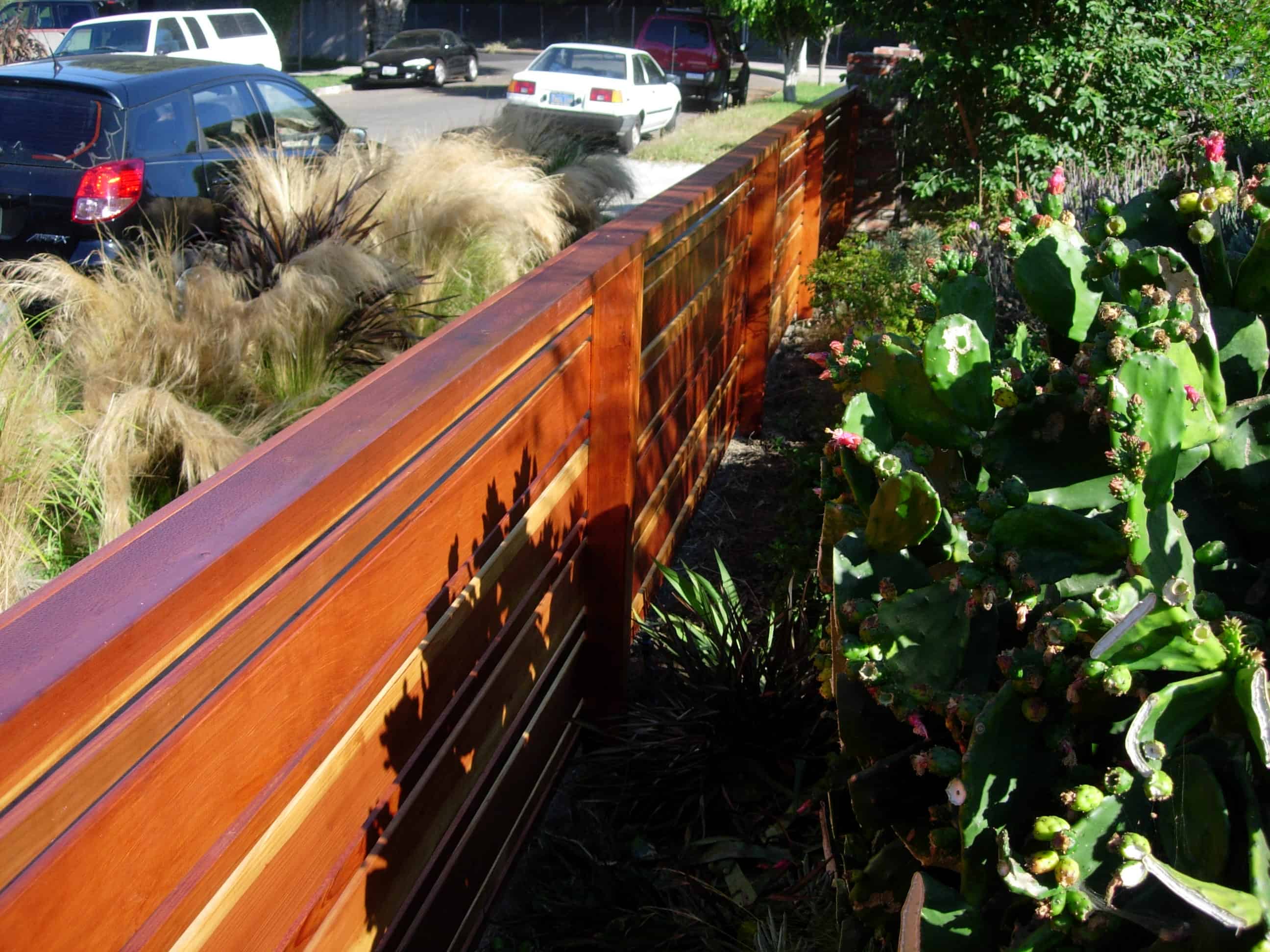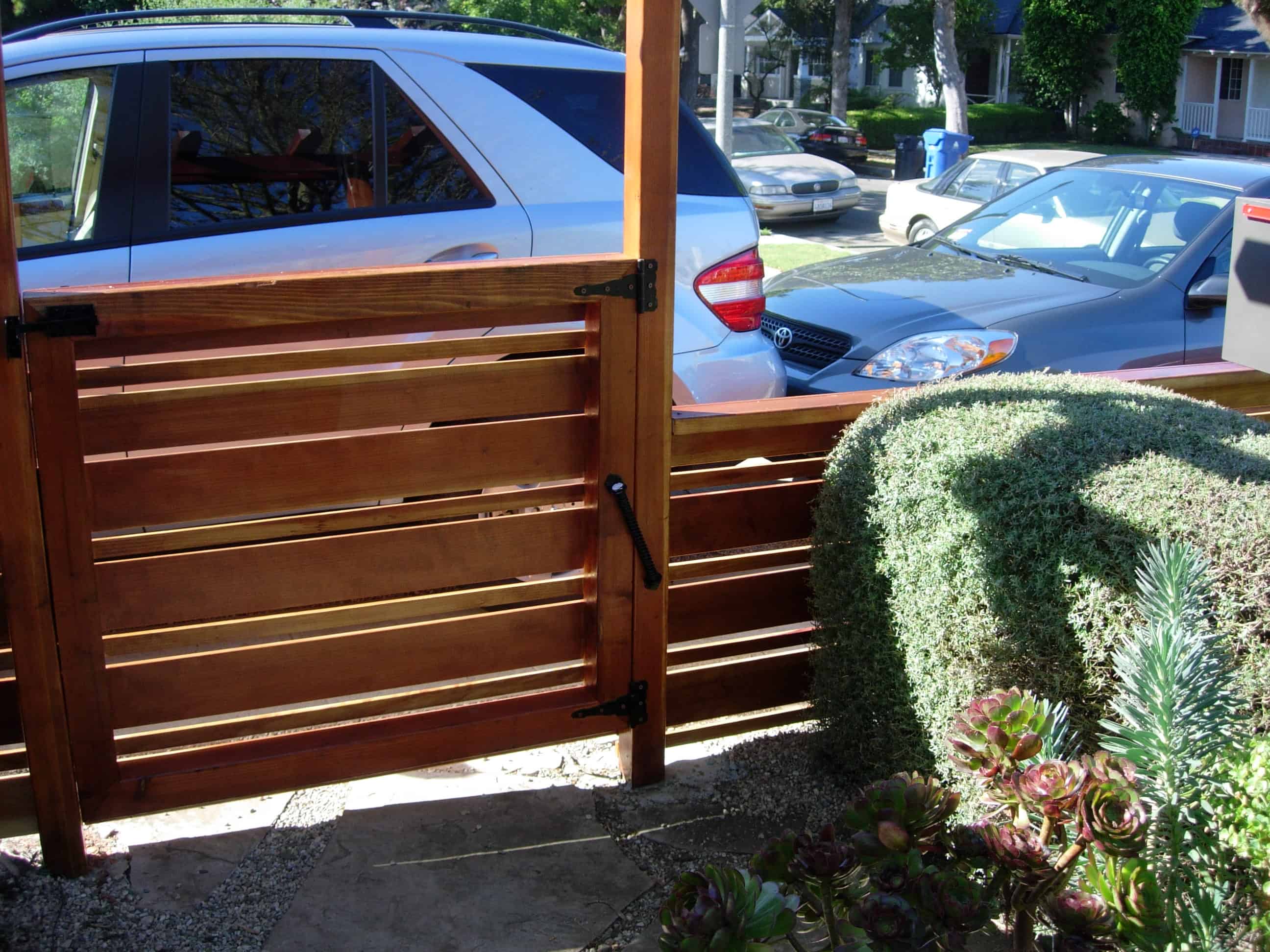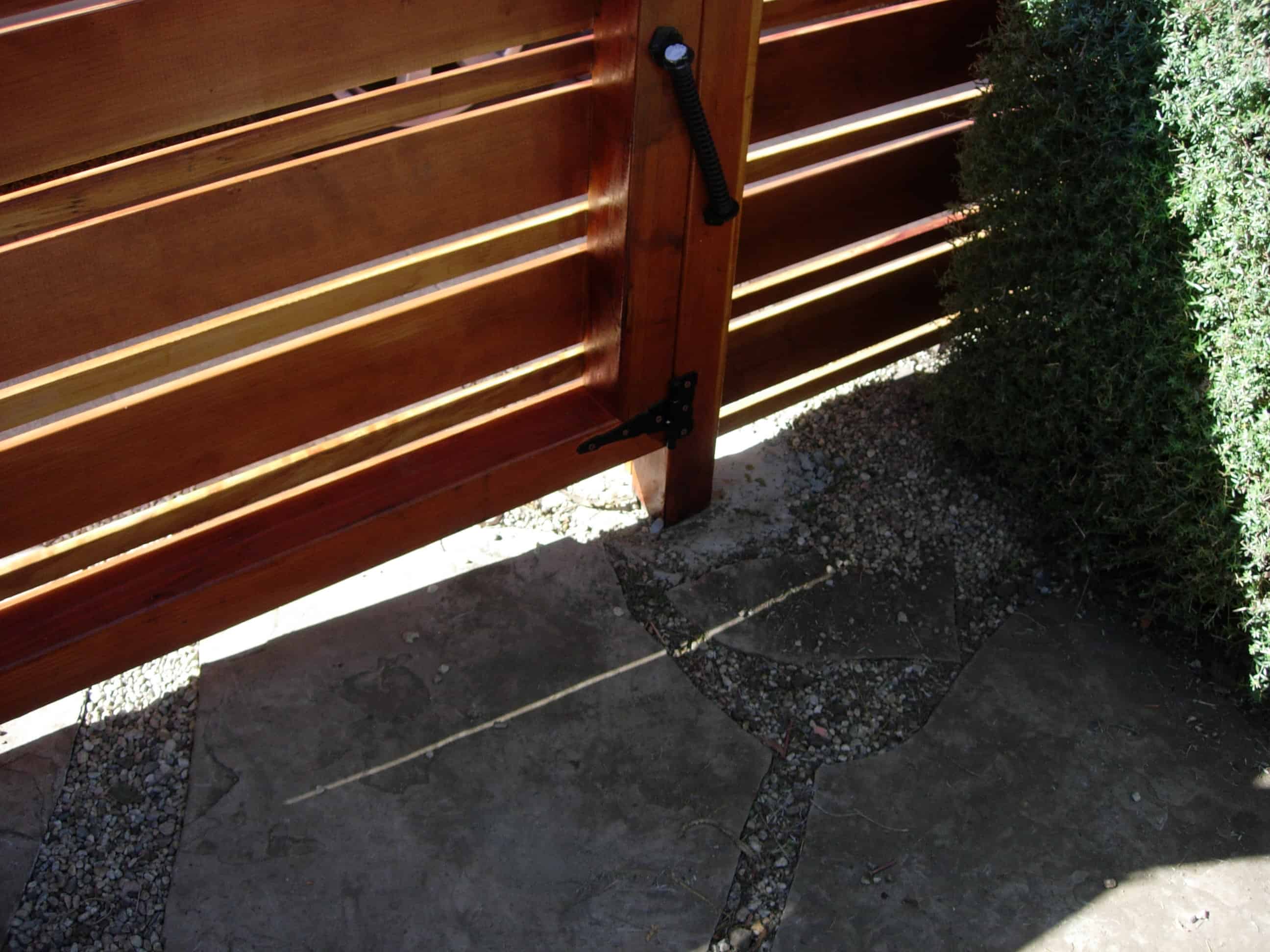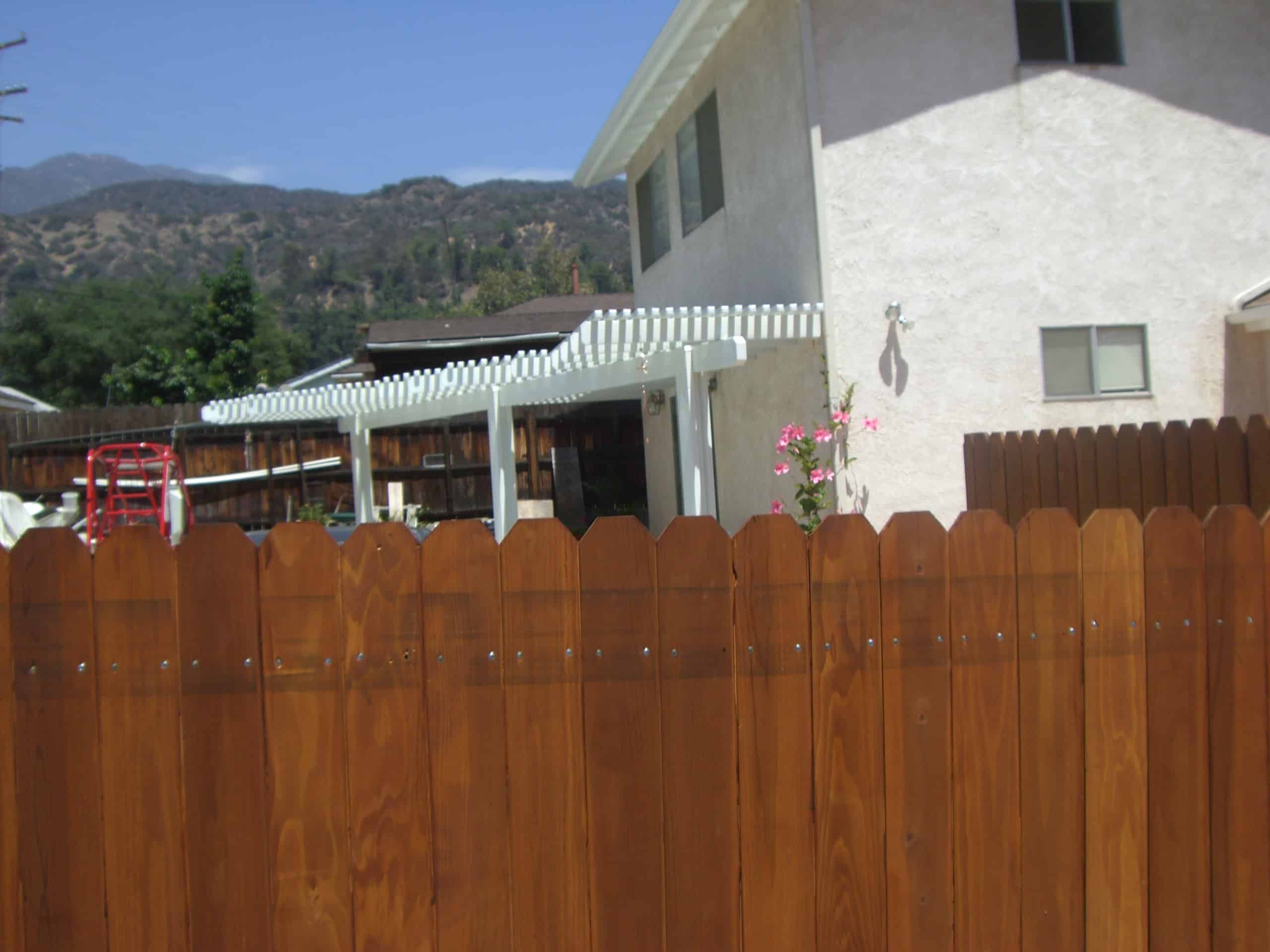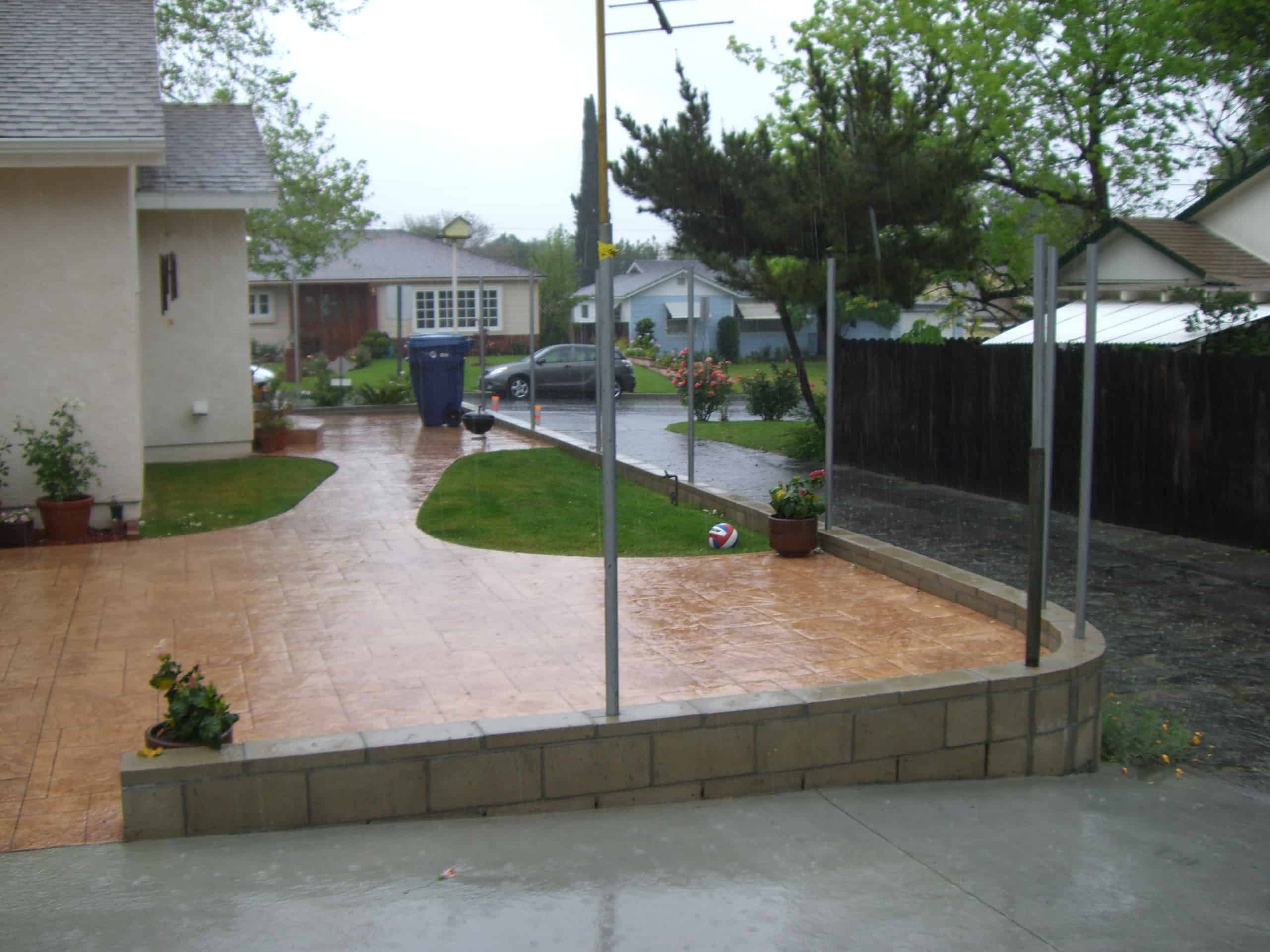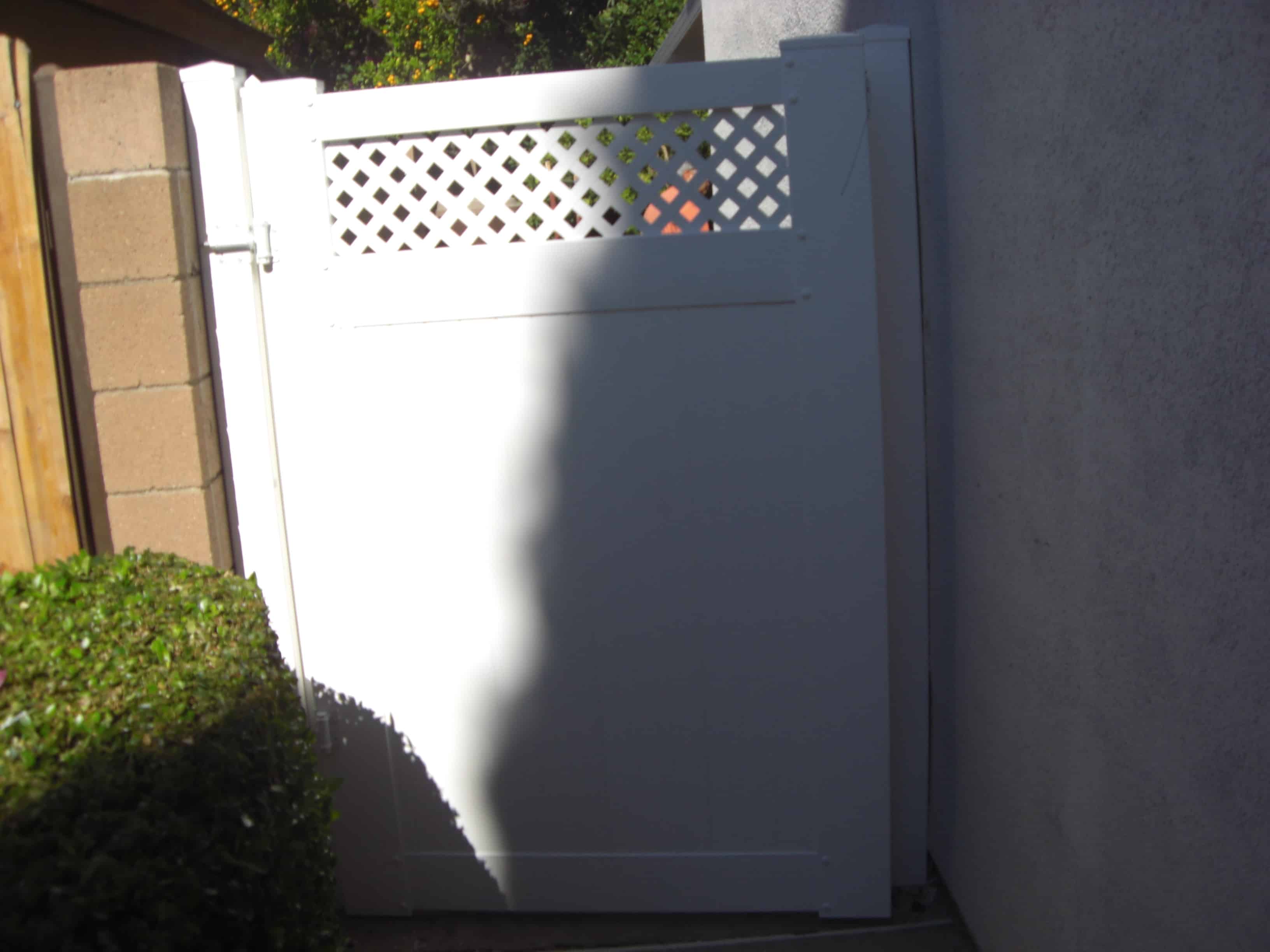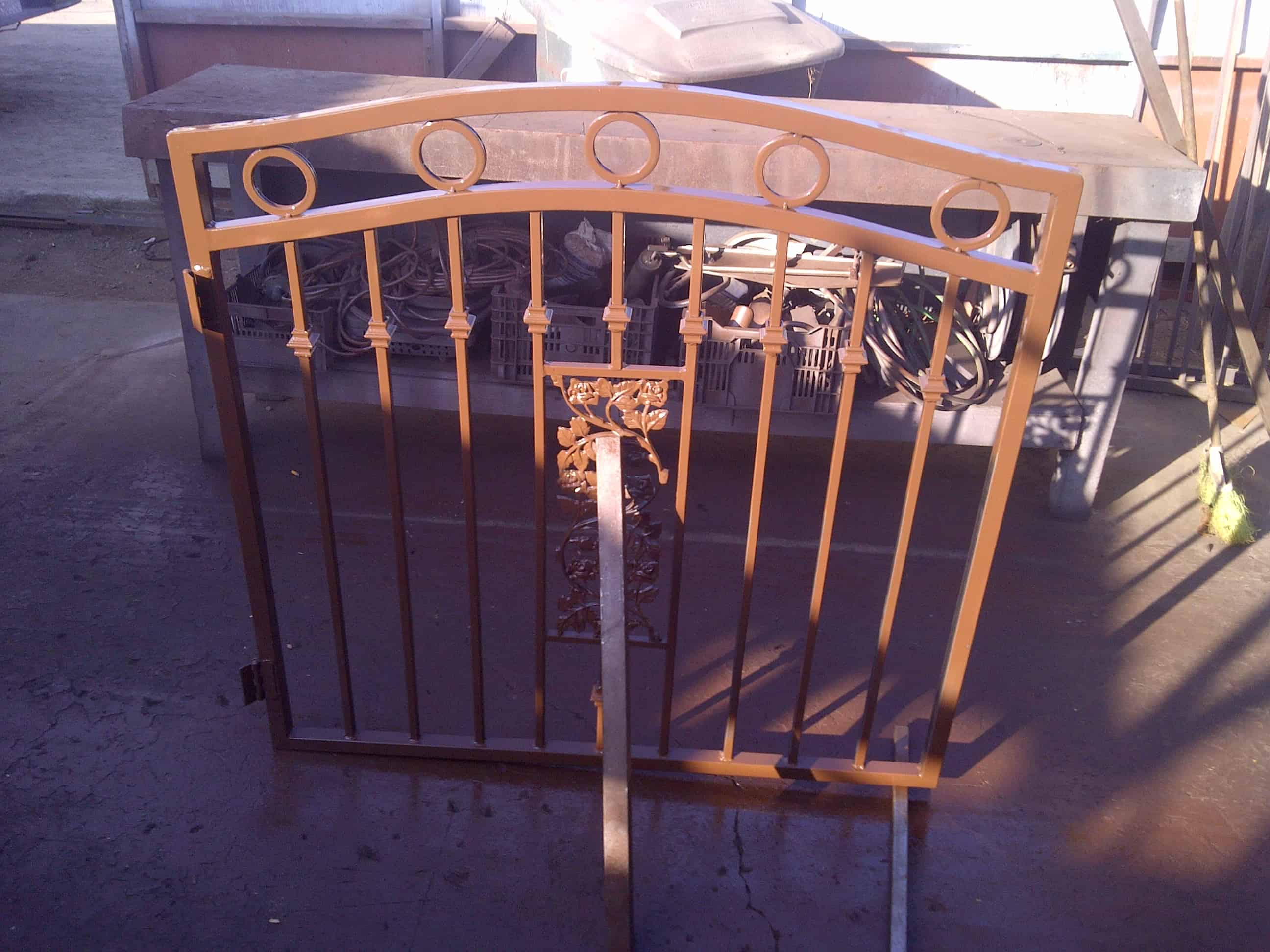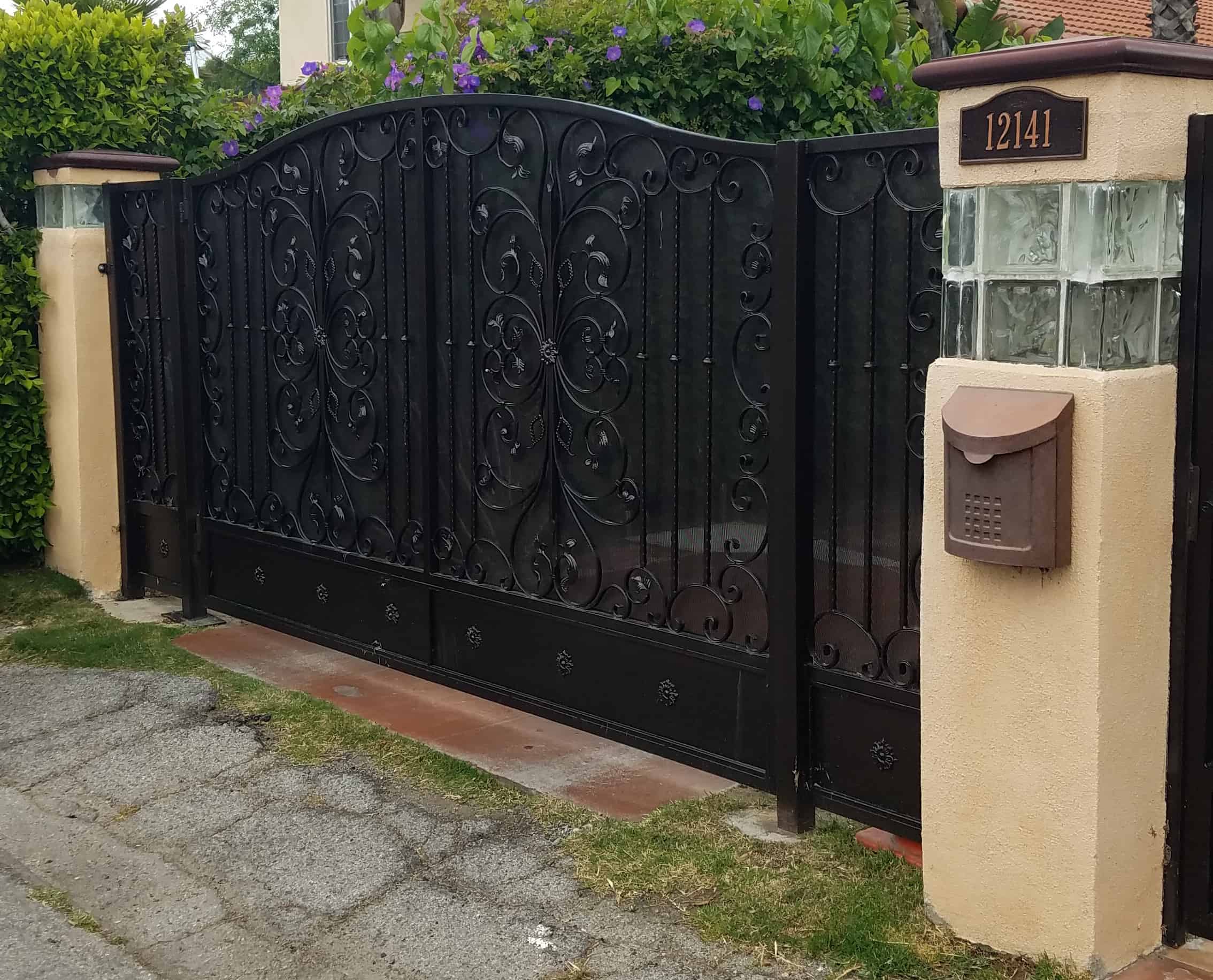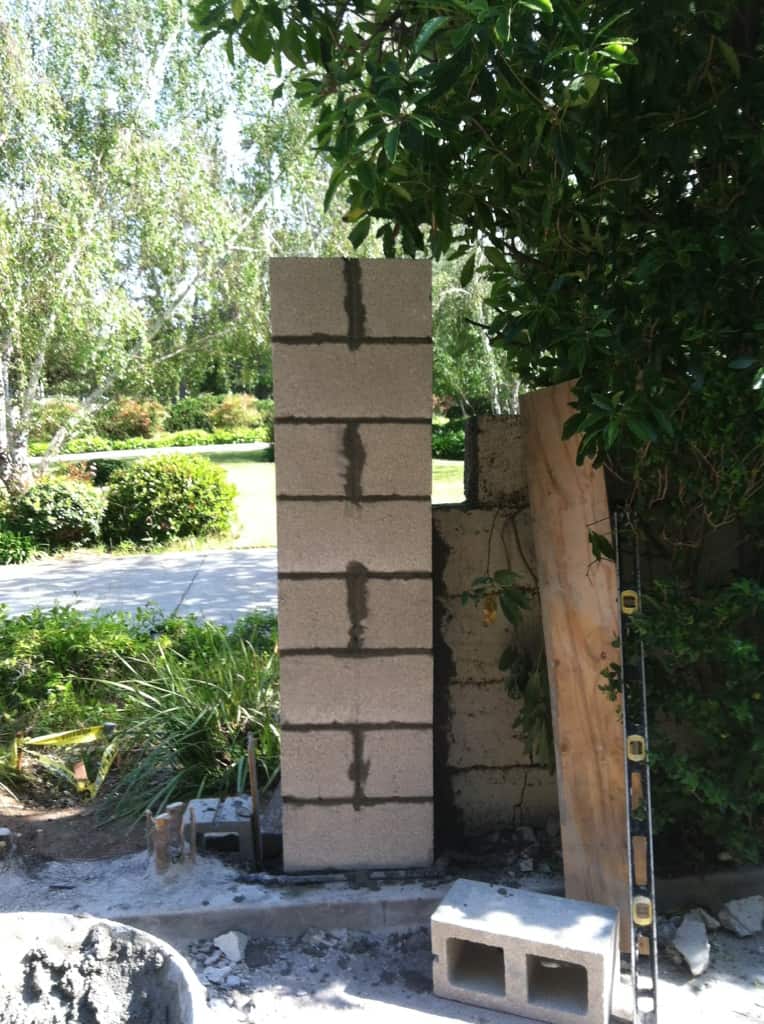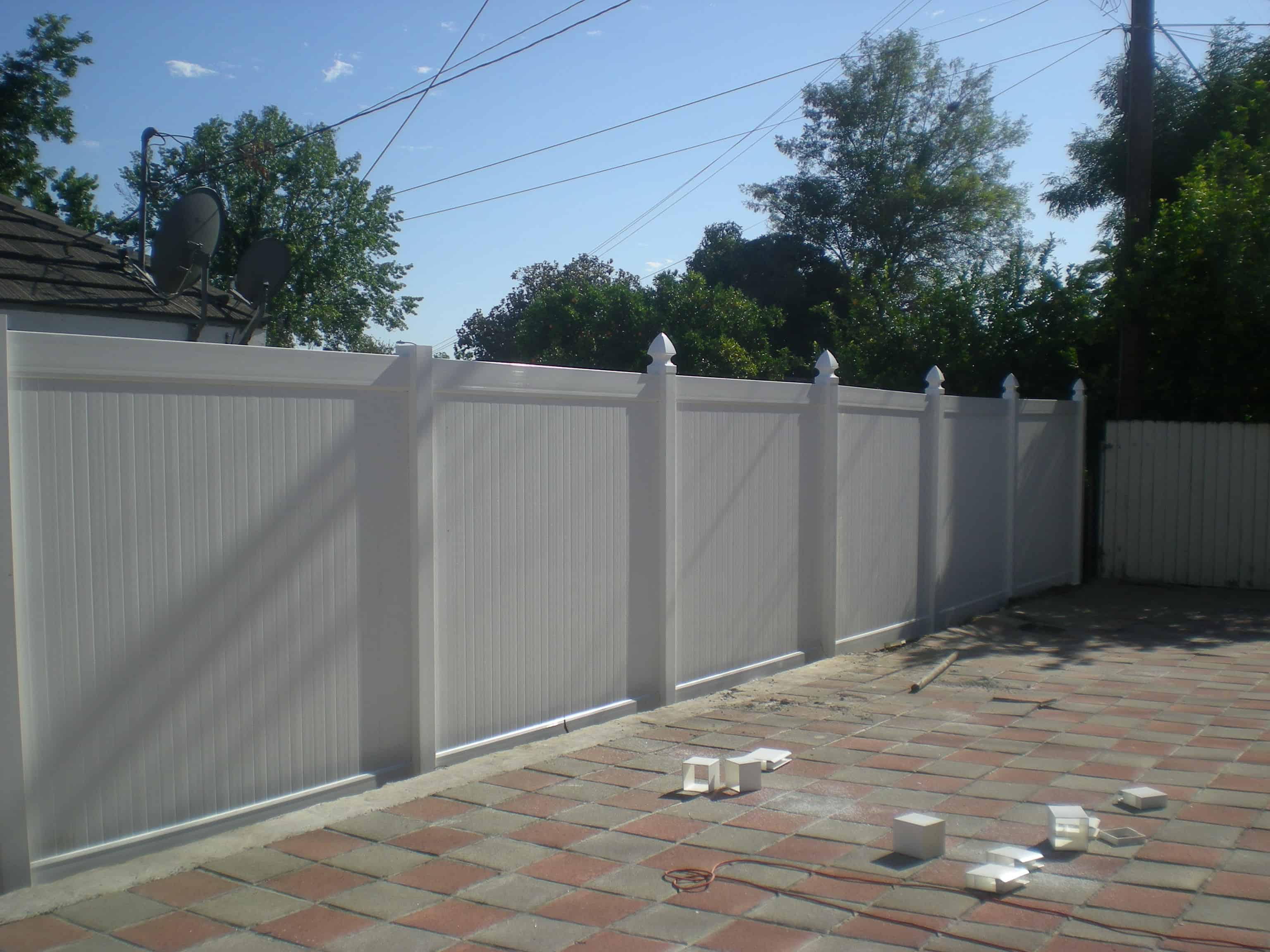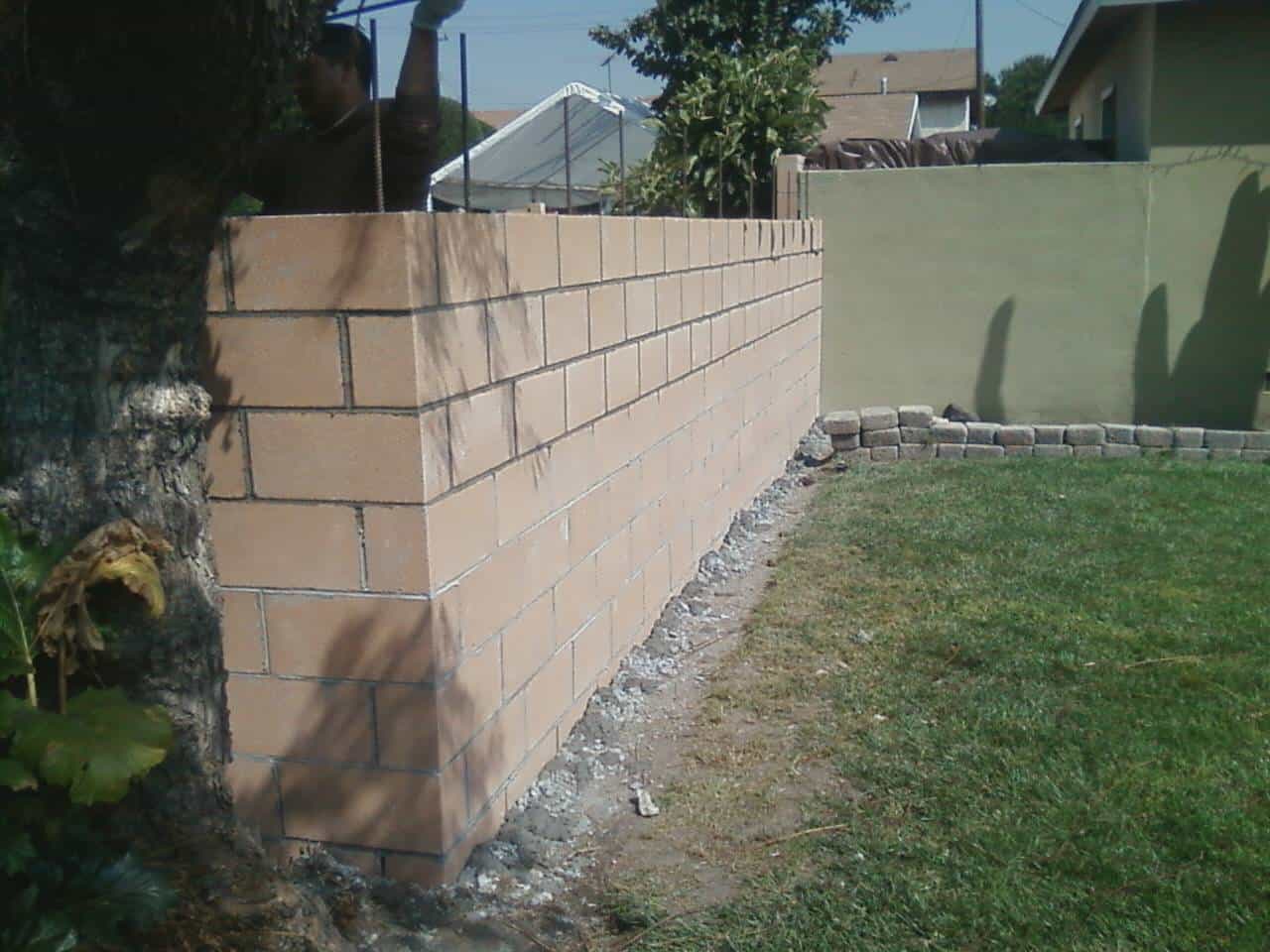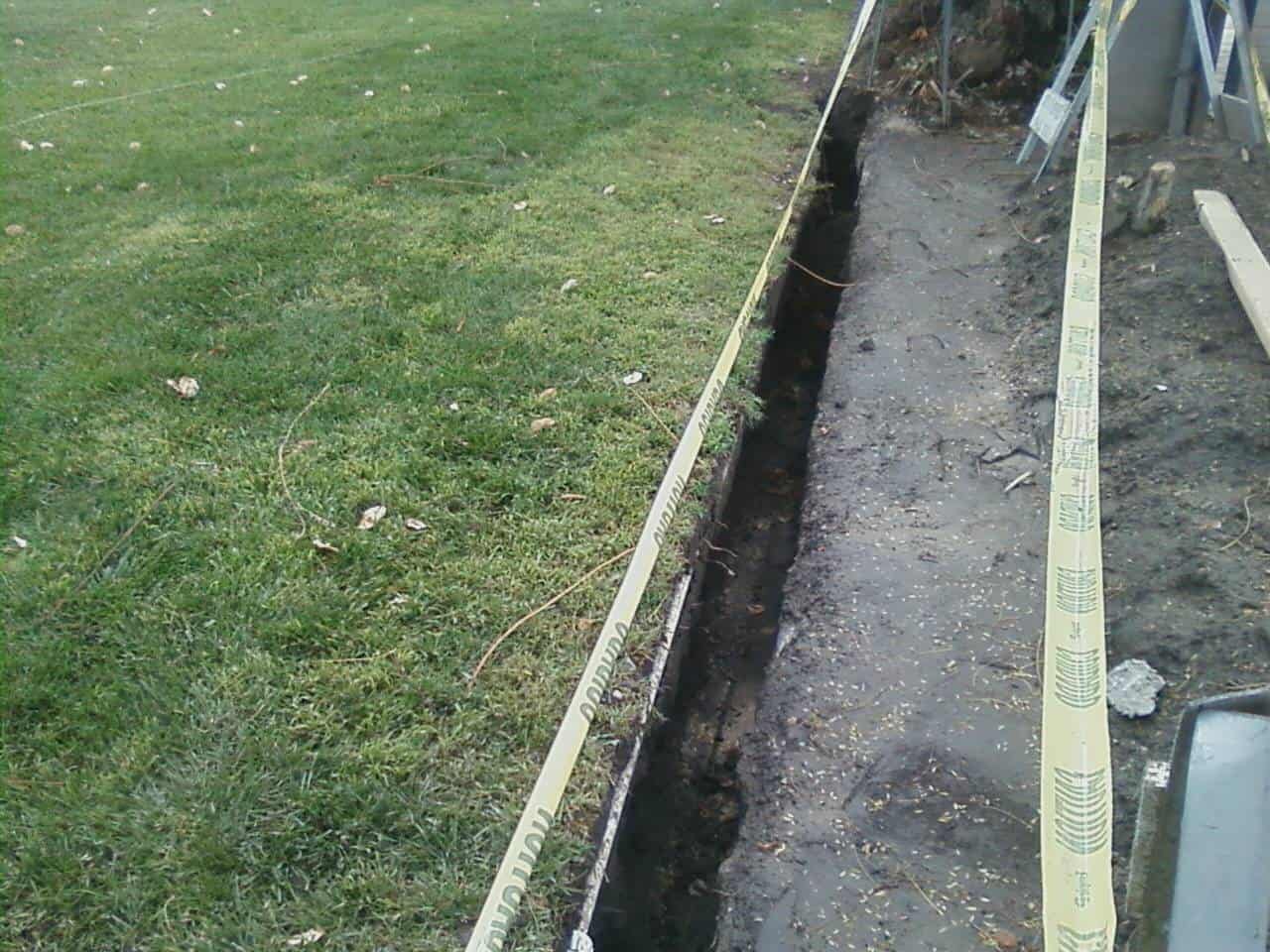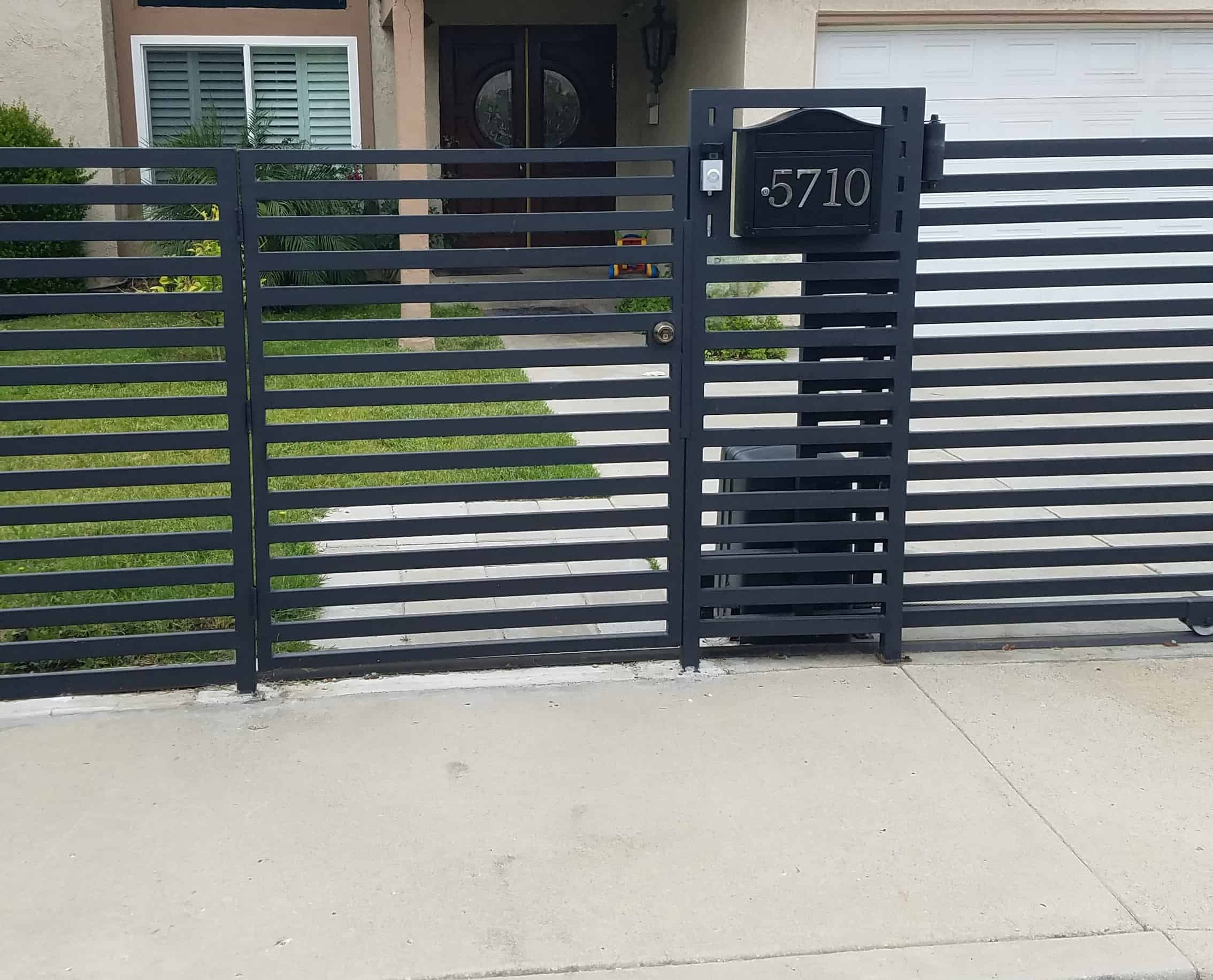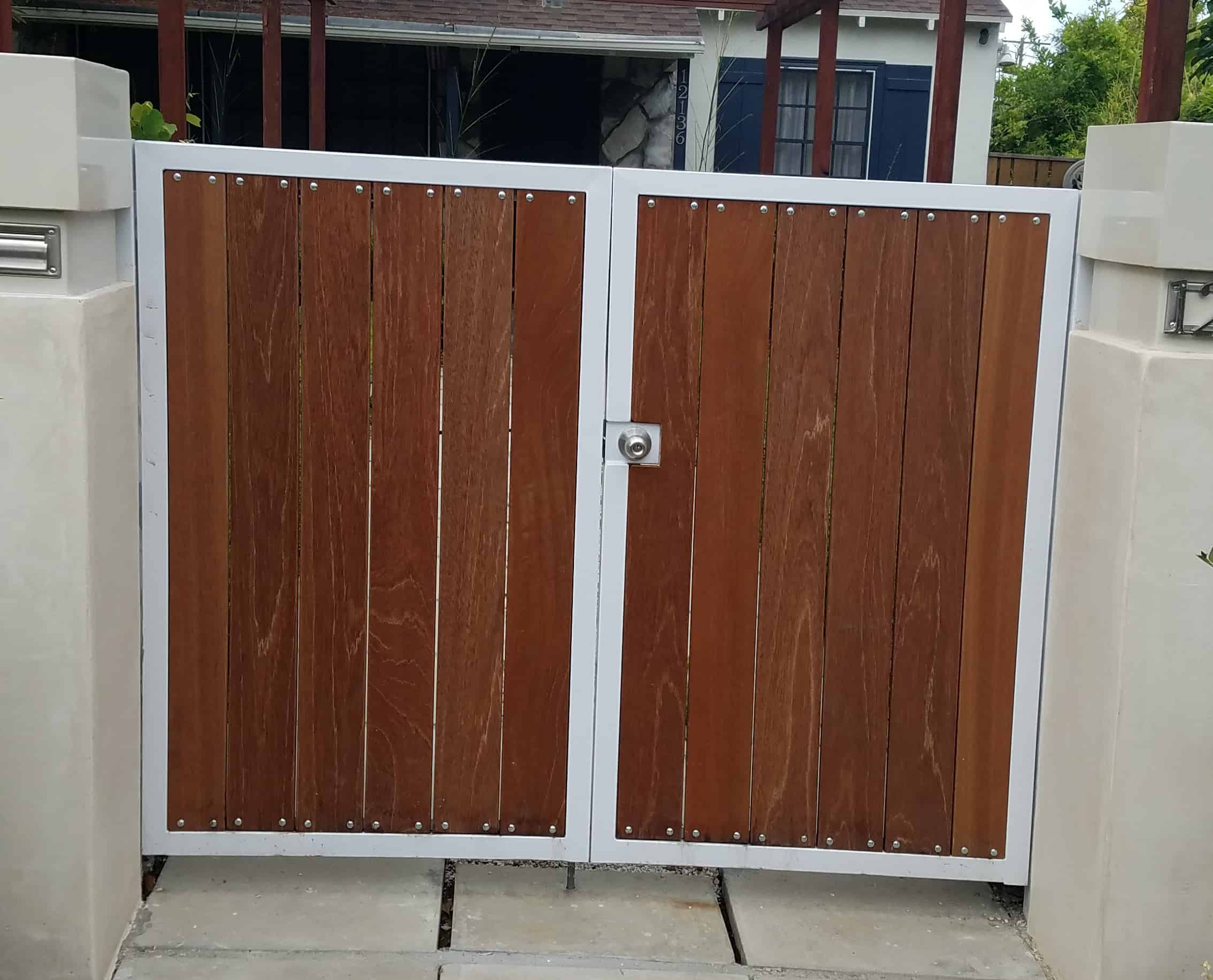Fences: Making The Right Choices
Adding a fence to your property is an investment, and we want you to be happy with your investment. There are many types of fences to choose from. They all differ in their durability, appearance, and level of maintenance.
We want you to choose the right type of fence for your needs, so we’re giving you some information about each of the types of fences that we install. This allows you to choose what is right for you.
If you have any questions, contact us or call us at 1-888-457-7746.
Types of Fences We Install
We’ve chosen to feature environmentally gentle options. Our picks—iron, wood, fiberglass composite and aluminum—all get kudos on the ecological front because they are constructed of substances that are either biodegradable or able to be recycled. Some are even made from recycled content.
Wood Fences
Well-maintained wood fences can last for years.
- Pros: Available in many styles and a wide variety of durable species, such as cedar, redwood, and various tropical hardwoods. For the most environmentally responsible options.
- Cons: Will rot or turn gray if not sealed properly. Must use non-rusting fasteners to prevent staining. Can dent or split if hit by a mower. Relatively heavy.
- Maintenance: Moderate to high. For best results, apply a water-repellent sealer containing wood preservative every year. Painted or stained wood must be scraped and repainted or restained every few years.
Wrought Iron Fences
This traditional style has been in use for years; some centuries old examples are still standing. Choose your own style. All metal fences are custom made.
- Pros: Extremely durable and sturdy; won’t dent or scratch easily, even if hit by a mower. Decades-old fences can be restored with handscraping, wire-brushing, or sandblasting. Virtually limitless variations of styles available.
- Cons: Heavy. Will rust and flake after many years if not well maintained.
- Maintenance: Moderate. Periodically apply a coat of liquid wax or clear linseed oil. Rinse occasionally with soapy water. Tackle rust by using a commercial rust remover and steel wool. Apply exterior paint every five years.
Vinyl Fences
Vinyl fences are an attractive option to many home-owners.
- Pros: Come in a variety of colors. No need for painting or staining. Won’t split or crack. Don’t get termite damage, fungus, or dry rot. Fire resistant.
- Cons: Cost more upfront than wood fences. Some types can have mildew problems, but are easy to clean. Repair can require more work than wood.
- Maintenance: Very low. Rinse occasionally with water.
Aluminum Fences
This is as close as you can get to a maintenance free product.
- Pros: Extremely durable. Lightweight. Recyclable and sometimes made of recycled materials. Should last for decades. No need to paint or seal. Many styles available.
- Cons: Not as sturdy as other options. Can dent or scratch if hit by a mower.
- Maintenance: Very low. Rinse occasionally with water.
Installation & Cost
Installing a fence can be a big project, but there are several different factors that determine what the cost will be. These include:
- Materials – fence posts, pickets, rails, hardware, and sealants.
- Length & Shape – the length the fence, the shape of the fence.
- Height – the height of the fence.
- Gates – does the fence contains gates?
- Additional Features – lattice work, post caps, etc.
Let’s take a look at each of these:
Materials
Not all wood is created equal. Pine, cedar and cypress are common choices for fence building with cedar and cypress costing more than lower-quality pine. Because of how the woods themselves differ, some builders recommend using pine for the posts and cedar for the pickets to maximize overall durability and longevity. The reason behind this is that treated, decay-resistant pine performs better in the ground while cedar is more resist to the effects of sun and rain. The lower expense of pine fence posts compared to cedar posts that cost twice as much can make a difference in the project budget without compromising quality.
Redwood is another choice, although it is far more expensive than other options. The primary advantage redwood has is aesthetic value, although it must be stained or treated to avoid turning grey with age and exposure. In the short term, redwood is certainly more eye-catching than other natural woods.
In addition to painting or staining, it’s always a good idea to apply waterproof sealant to a wooden fence to protect it from the elements. The sealant is applied after a stain or alone. In general, most sealants should be reapplied every six to 24 months, depending on manufacturer recommendations. Clear products are the most common, although sealants with pigment are growing in popularity.
Length & Shape of the Fence
The length of a fence, usually given in linear feet, is another factor that determines the overall cost of the project. Longer fences cost more, of course, but polygonal fences that are not square or rectangular involve additional costs associated with more posts, hardware and labor. These must be factored into the budget for the project.
Height of the Fence
The height of the fence also affects the project expenses with shorter fences costing less than taller ones. The difference between 6-foot and 8-foot pine pickets, both popular heights for privacy fences, varies from a few pennies per individual picket to much more than that; however, even those few cents will add up, especially for longer fences.
Homeowners should ask themselves how much fence they really need. For those trying to fence in the family dog, few small dogs can leap a 6-foot fence, but without proper precautions, digging underneath is a possibility best thwarted with the installation of reinforcing bar. For those who are seeking to block road noise or prying neighbors, 8-foot fences might prove the better choice, depending on the topography of the lot.
Gates
As a rule, gates cost more than standard paneling but are a useful feature, even for fenced areas that are accessible through the exterior door of the home. In addition to function, gates can also be decorative showpieces that significantly enhance the appeal of the fence. As a rule of thumb, gate costs start at about 25 percent more than a single panel of the same material.
Gates do not necessarily need to be made of wood. They can be constructed from wrought iron, chain link or mixed materials, some of which are harder on the budget than others. For gates facing the front of a property, spending extra can add curb appeal. For rear- or side-facing gates, this is a place where some money could be saved by choosing a lower-cost option such as chain link or a plain wooden gate.
The size of the gate required also influences the price. In general, a standard gate is 4 feet wide. Gates large enough to move a vehicle through can cost much more, especially for automated driveway gates. For most yards, a standard gate works well and will generally accommodate a wheelbarrow and riding lawnmower if necessary.
Additional Features
Lattice work, post caps and fence toppers are popular add-on items for wooden fences, giving them more individuality and flair. Of these options, fence panels with lattice work are the most expensive; however, they add height and style to the fence. It isn’t uncommon for lattice work to double the price per panel. Generally, the more complex the design, the more expensive the panel will be.
Post caps and fence toppers can be somewhat more affordable, depending on the type and number used in the project. At the high end of the range are products such as solar-powered post caps for illumination.
Fence toppers include rails for the top of the fence to give it a more finished appearance. These cost a few dollars per section depending on the wood type, length and widths required, and beam ends make the rail even more polished-looking. Lattice fence toppers are also available as an alternative to pre-assembled latticed panels.
Repair / Maintenance
Your fence is an investment in the beauty and security of your property. This investment is exposed to the elements on a daily basis. Routine maintenance is essential to ensure the beauty and structural integrity of your fence.
Our design and building team can help suggest best fence for your project and ensure its successful installation, as per your deadline and budget. Get in touch with us at 1-888-457-7746 for a free in-home consultation.



